How does this children's clothing fit: compare 51 brands to play in
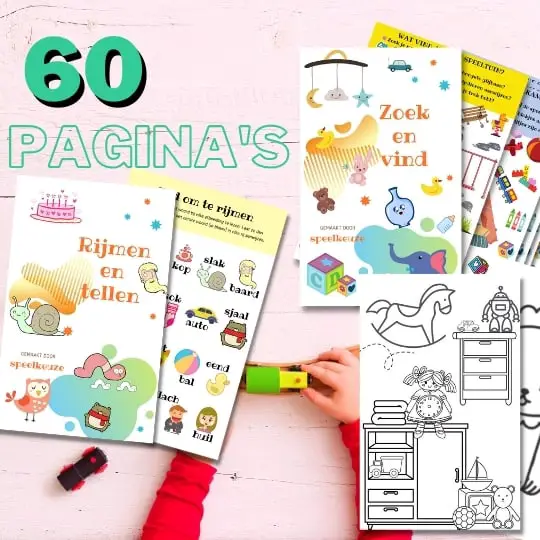
Always something to do for the holidays or rainy day?
Play Choice now has the ultimate activity book collection, with over 60 pages of fun coloring pages and educational puzzles.
Before you buy children's clothing online, you must first find out the size of your child and I have some tips for this.
But then the sizing turns out to be different from brand to brand, so they may not fit your child when they arrive.
In this article I took a look at the 51 most popular brands and weighed up the sizes. This way you can find the common ground between the sizes of different brands before you order!
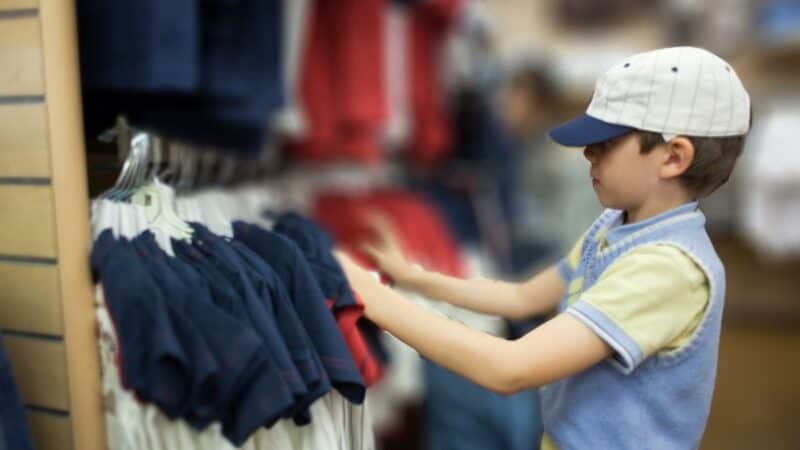
You will see that the sizes differ per brand, in practice. At the bottom I also give you SUPER useful tips that you can use to choose the right size for your child.
It turned out to be a pretty comprehensive article, so feel free to skip to the brand that interests you, they are in alphabetical order :)
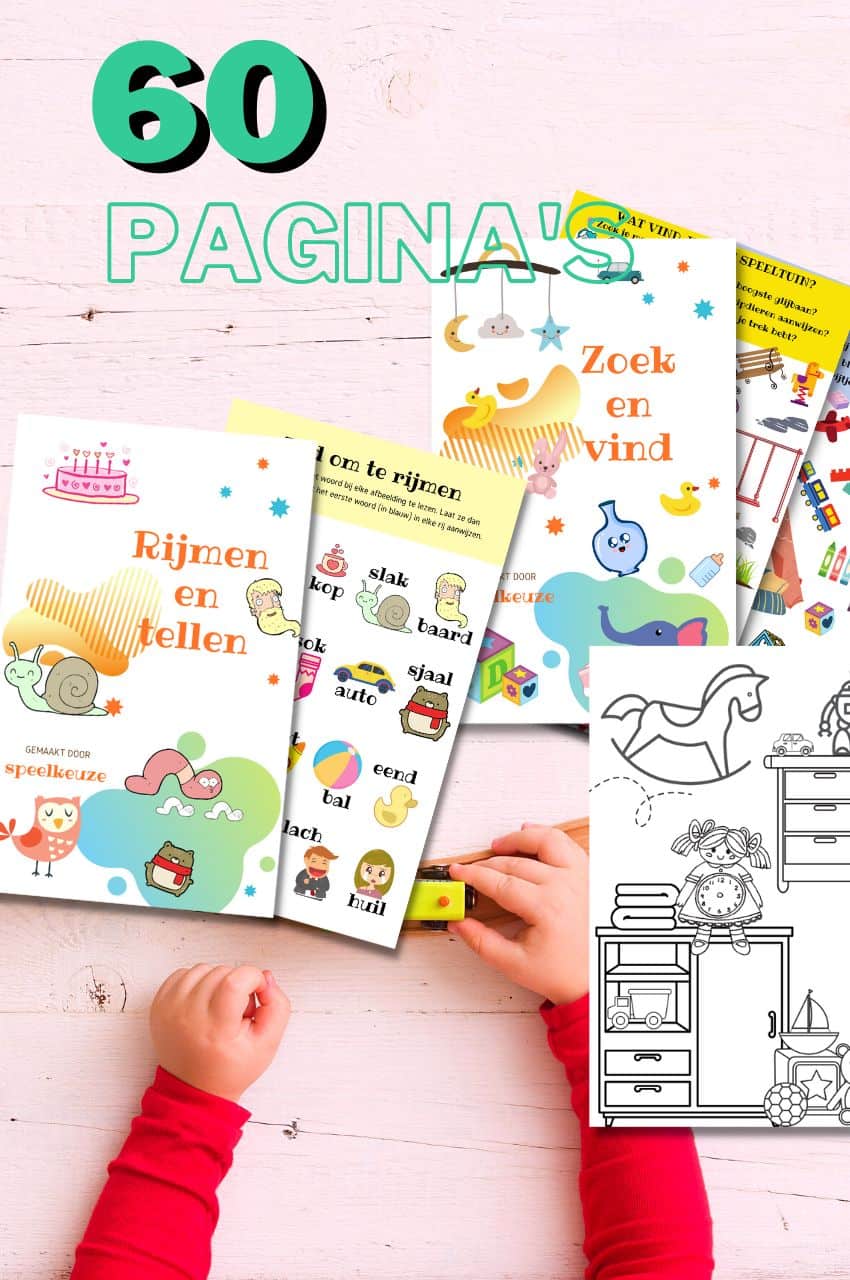
From toddler to toddler activity book collection
Educational games and coloring pages for 3 to 6 years
Your toddler and preschooler will love this e-book, along with the accompanying printables. He or she can play with it at every stage of development, together with mom and dad.
Buy at Bol.comWhat we discuss in this comprehensive post:
- 1 How does children's clothing fall from these popular brands?
- 1.1 How is Aliexpress children's clothing fall?
- 1.2 How does Beebielove fall?
- 1.3 How does Blue seven fall?
- 1.4 How does B Nosy fall?
- 1.5 How does C&A children's clothing fall?
- 1.6 How do cars jeans fall?
- 1.7 How does CKS fall?
- 1.8 How does Coolcat fall?
- 1.9 How does Dirkje fall?
- 1.10 How does DJ Dutchjeans fall?
- 1.11 How does Esprit children's clothing fall?
- 1.12 How does Gabbiano fall?
- 1.13 How does Geisha fall?
- 1.14 How does Hema children's clothing fall?
- 1.15 How does H&M fall?
- 1.16 How does Ikks fall?
- 1.17 How does Imps & Elfs fall?
- 1.18 How does Jollein fall?
- 1.19 How does Jubel fall?
- 1.20 How does Kiabi fall?
- 1.21 How does Kiddo fall?
- 1.22 How does Gravel fall?
- 1.23 How does Koeka fall?
- 1.24 How does Kokonoko fall?
- 1.25 How does Lidl children's clothing fall?
- 1.26 How does Like Flo fall?
- 1.27 How does LoFff fall?
- 1.28 How does Mango kids fall?
- 1.29 How does Molo fall?
- 1.30 How does Name It fall?
- 1.31 How does Nik & Nik fall?
- 1.32 How does Noppies fall?
- 1.33 How does O'chill fall?
- 1.34 How does Oilily children's clothing fall?
- 1.35 How does O'Neill children's clothing fall?
- 1.36 How does Petrol children's clothing fall?
- 1.37 How does Prenatal children's clothing fall?
- 1.38 How does Primark clothing fall?
- 1.39 How does Quapi fall?
- 1.40 How does Raizzed fall?
- 1.41 How does Retour Jeans fall?
- 1.42 How does River Island children's clothing fall?
- 1.43 How does S.Oliver fall?
- 1.44 How does Terstal children's clothing fall?
- 1.45 How does Tommy Hilfiger children's clothing fall?
- 1.46 How does Tom Tailor children's clothing fall?
- 1.47 How does Tumble 'N Dry fall?
- 1.48 How does Vingino fall?
- 1.49 How do We fall children's clothes?
- 1.50 How does Zara children's clothing fall?
- 1.51 How does Z8 fall?
- 2 Determine the correct size for your child
- 3 Buy children's clothes on the growth
- 4 Children's clothing size chart
- 5 Combine sizes so they can play well
- 6 Do shoes have the same sizes everywhere?
- 7 Buy children's clothes
How does children's clothing fall from these popular brands?
How is Aliexpress children's clothing fall?
In their size chart there are a number of remarks, namely that the sizes can differ and it is Asian size.
I always read the table or and take a measuring tape myself and take all my measurements.
In this case you only need to record three bars; chest, length and sleeve. You can then check these sizes with the size table.
Chances are that you will end up with a 2XL. This is because Asian people are a lot smaller than Europeans and therefore have different sizes.
It is often very confusing which size to order. You never know whether the sizes apply to the Chinese or to Europeans. And this is very frustrating at times.
If in doubt, my advice is to contact the seller anyway, you can ask your question in English and you will usually get an answer quickly in (often not too good) English.
Check out the kids clothes at Aliexpress here
How does Beebielove fall?
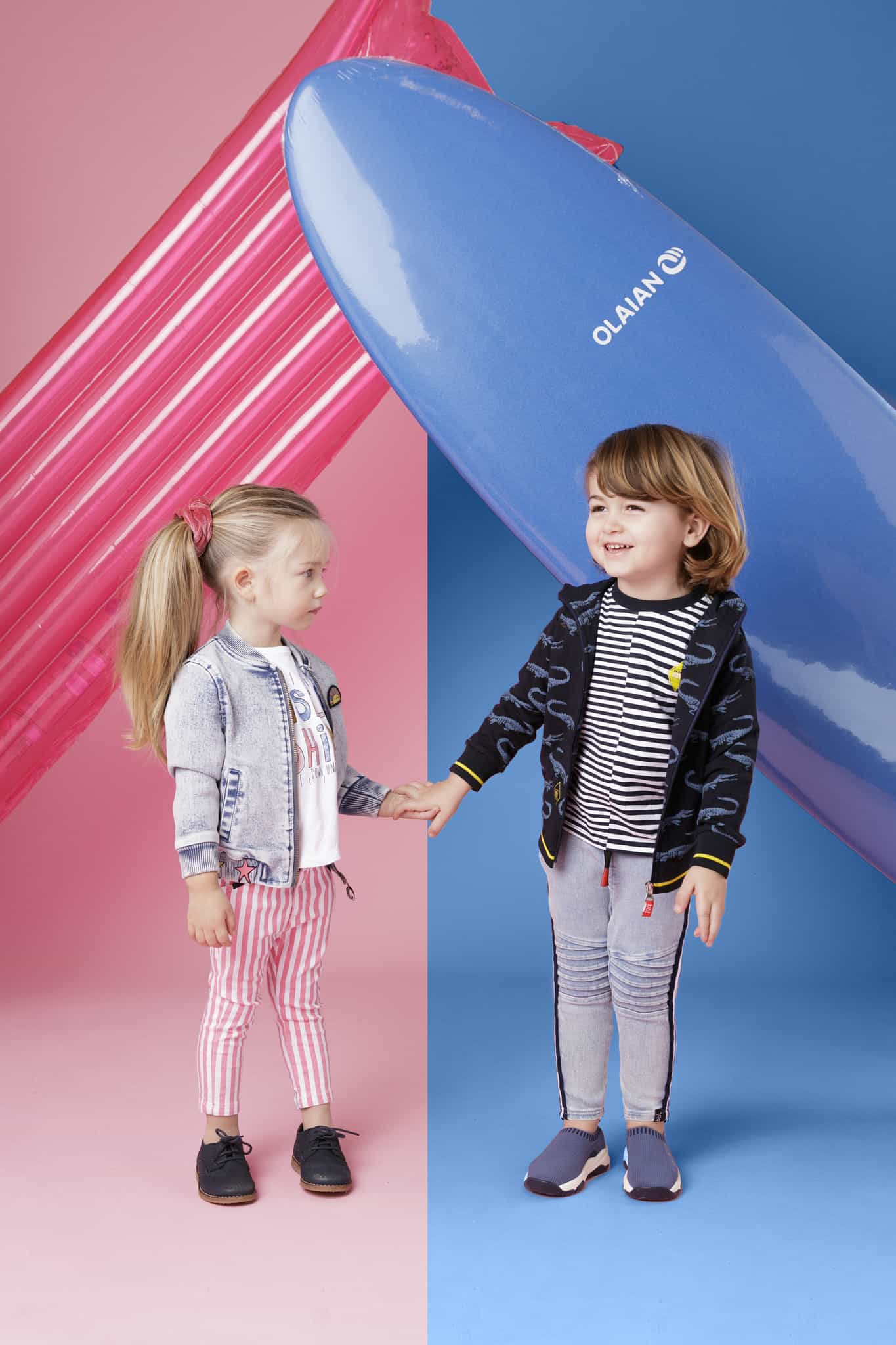
Beebielove is generally on the small side. It is a cheerful and original Dutch clothing brand for babies and children that runs up to size 104.
The prints and colors are unique! As they claim 'Clothes to fall in love with!'.
Various themes are given a modern look at this hip brand.
Beebielove size chart
Girls long sleeve t-shirts:
- maat 56; length 25,5; width 20,5; sleeve 28
- maat 62; length 28; width 22; sleeve; 30,5
- maat 68; length 30; width 23,5; sleeve 32,5
- maat 74; length 32; width 24,5; sleeve 34,5
- maat 80; length 33,5; width 25,5; sleeve 37
- maat 86; length 35; width 26,5; sleeve 39,5
- maat 92; length 36,5; width 27,5; sleeve 42
- maat 98; length 38; width 28,9; sleeve 45
- maat 104; length 40; width 29,5; sleeve 48
Girls pants:
- maat 56; length 30; width 40
- maat 62; length 33; width 42,5
- maat 68; length 36; width 44,5
- maat 74; length 39; width 46
- maat 80; length 42,5; width 48
- maat 86; length 46; width 50
- maat 92; length 50; width 52
- maat 98; length 54; width 54,5
- maat 104; length 58; width 57
Boys long sleeve t-shirts:
- maat 56; length 25; width 21; sleeve 28
- maat 62; length 27; width 23; sleeve; 30,5
- maat 68; length 29; width 24; sleeve 32,5
- maat 74; length 31; width 25,5; sleeve 35
- maat 80; length 33; width 26,5; sleeve 37,5
- maat 86; length 35; width 27,5; sleeve 40,5
- maat 92; length 37; width 29; sleeve 43
- maat 98; length 39; width 30; sleeve 46
- maat 104; length 41; width 31; sleeve 49
Boys pants:
- maat 56; length 30; width 40
- maat 62; length 33; width 42,5
- maat 68; length 36; width 44,5
- maat 74; length 39; width 46
- maat 80; length 42,5; width 48
- maat 86; length 46; width 50
- maat 92; length 50; width 52
- maat 98; length 54; width 54,5
- maat 104; length 58; width 57
How does Blue seven fall?
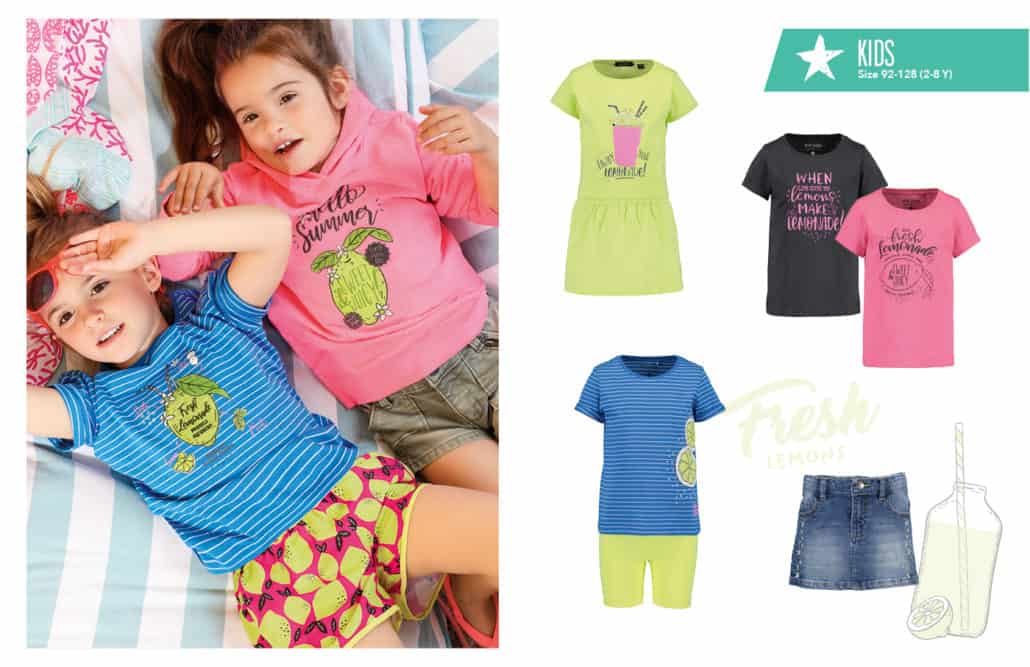
They use butterflies, hedgehogs and flowers in their baby and mini collections, for the bigger kids we see a lot of tropical fruits and cocktail prints this summer.
The Teens collection uses warm colors in combination with many cool colors, such as army green; wide sweaters and cargo pants set the tone. Everything in the most comfortable and soft fabrics!
This brand is a bit big; Blue Seven has four categories of children's clothing.
Newborn clothes from size 56 to 68, Mini Kids clothes from size 62 to 86, Kids clothes in size 92 to 128 and clothes for Teenagers in size 134 to 176.
Blue Seven size chart
Newborn / Mini kids
- maat 56; length 25,5; width 20,5; sleeve 28
- maat 62; length 28; width 22; sleeve; 30,5
- maat 68; length 30; width 23,5; sleeve 32,5
- maat 74; length 32; width 24,5; sleeve 34,5
- maat 80; length 33,5; width 25,5; sleeve 37
- maat 86; length 35; width 26,5; sleeve 39,5
Kids
- maat 92; 2 years
- maat 98; 3 years
- maat 104; 4 years
- maat 110; 5 years
- maat 116; 6 years
- maat 122; 7 years
- maat 128; 8 years
teens
- maat 134; 9 years
- maat 140; 10 years
- maat 146; 11 years
- maat 152; 12 years
- maat 158; 13 years
- maat 164; 14 years
- maat 170; 15 years
- maat 176; 16 years
View the selection here at bol.com
How does B Nosy fall?

The B Nosy brand is a new Dutch brand that is doing very well among children's clothing brands. The popular brand has very trendy children's and baby clothes.
Opinions on how B Nosy's children's clothes fall are diverse.
Most people find that the brand fits exactly to size and has a slim fit.
For example, if you buy a winter coat for your 9-year-old daughter, a size 134 (which in principle should belong to this age) would be much too narrow and the sleeves would also be too short.
However, other users find that the sizes are varied. For this brand, it is recommended to choose a size larger than the size in which your child now falls.
The available sizes of B Nosy go from 62 to 86 for the babies and from 92 to 164 for the bigger kids.
B Nosy size chart
Baby
- maat 62; arm's length; 19,9-22,3; leg length 16-19,5; 1-3 months
- maat 68; arm length 21,8-24,3; leg length 19,5-23; 3-6 months
- maat 74; arm length 23,8-26,3; leg length 23-26,5; 6-9 months
- maat 80; arm length 25,8-28,3; leg length 26,5-30; 9-12 months
- maat 86; arm length 27,8-30,3; leg length 30-33,5; 12-18 months
Boys
- maat 92; arm length 30,8-33,8; leg length 31-35; 1,5-2 years
- maat 98; arm length 33-36; leg length 35-39; 2-3 years
- maat 104; arm length 35,3-38,3; leg length 39-43; 3-4 years
- maat 110; arm length 37,5-40,5; leg length 43-47; 4-5 years
- maat 116; arm length 39,8-42,8; leg length 47-51; 5-6 years
- maat 122; arm length 42-45; leg length 51-55; 6-7 years
- maat 128; arm length 44,3-47,3; leg length 55-59; 7-8 years
- maat 134; arm length 46,5-49,5; leg length 59-63; 8-9 years
- maat 140; arm length 48,8-51,8; leg length 63-67; 9-10 years
- maat 146; arm length 51-54; leg length 67-70; 10-11 years
- maat 152; arm length 53,5-56,5; leg length 70-73; 11-12 years
- maat 158; arm length 56,3-59,3; leg length 73-76; 12-13 years
- maat 164; arm length 58-61; leg length 76-79; 13-14 years
Girls
- maat 92; arm length 29,8-32,8; leg length 31-35; 1,5-2 years
- maat 98; arm length 31,3-34,3; leg length 35-39; 2-3 years
- maat 104; arm length 33,5-36,5; leg length 39-43; 3-4 years
- maat 110; arm length 35,8-38,8; leg length 43-47; 4-5 years
- maat 116; arm length 38-41; leg length 47-51; 5-6 years
- maat 122; arm length 40,3-43,3; leg length 51-55; 6-7 years
- maat 128; arm length 42,5-45,5; leg length 55-59; 7-8 years
- maat 134; arm length 44,8-47,8; leg length 59-63; 8-9 years
- maat 140; arm length 47-50; leg length 63-67; 9-10 years
- maat 146; arm length 49,5-52,5; leg length 67-70; 10-11 years
- maat 152; arm length 69-72; leg length 70-73; 11-12 years
- maat 158; arm length 72-75; leg length 73-76; 12-13 years
- maat 164; arm length 58-61; leg length 76-79; 13-14 years
How does C&A children's clothing fall?
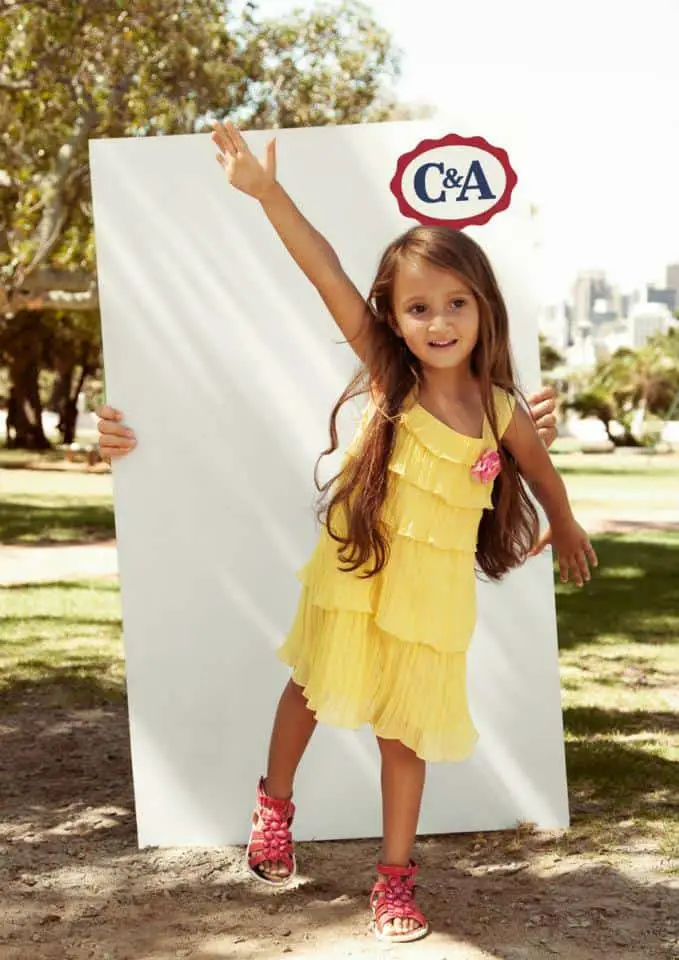
C & A's clothing is reasonably sized to small. Much of the collection is made from organic cotton. C&A thus also contributes to a good wage for the cotton workers.
So you contribute to a better and better world by buying these organic items. These clothes are just as affordable as the rest of the C&A collection.
C&A size chart
Baby sizes
- maat 42; up to 3kg; newborns
- maat 46: up to 3kg; newborns
- maat 50: up to 3kg; newborns
- maat 56: up to 4,5kg; 0-1 month
- maat 62: up to 5 kg; 2-3 months
- maat 68: up to 8 kg; 3-6 months
- maat 74: up to 9kg; 6-9 months
- maat 80: up to 10 kg 9-12 months
- maat 86: up to 11 kg; 12-18 months
- maat 92: up to 12,5 kg; 18-24 months
- maat 98: up to 16 kg; 24-36 months
Girls 92-176 bottoms
- maat 98; leg length 41; 3 years
- maat 104; leg length 45,5; 4 years
- maat 110; leg length 49; 5 years
- maat 116; leg length 52; 6 years
- maat 122; leg length 56; 7 years
- maat 128; leg length 60; 8 years
- maat 134; leg length 63; 9 years
- maat 140; leg length 66; 10 years
- maat 146; leg length 68,5; 11 years
- maat 152; leg length 71,5; 12 years
- maat 158; leg length 74,5; 13 years
- maat 164; leg length 77,5; 14 years
- maat 170; leg length 78; 15 years
- maat 176; leg length 78,5; 16 years
Girls 92-176 tops
- maat 92; 2 years
- maat 98; 3 years
- maat 104; 4 years
- maat 110; 5 years
- maat 116; 6 years
- maat 122; 7 years
- maat 128; 8 years
- maat 134; 9 years
- maat 140; 10 years
- maat 146; 11 years
- maat 152; 12 years
- maat 158; 13 years
- maat 164; 14 years
- maat 170; 15 years
- maat 176; 16 years
Boys 92-182 bottoms
- maat 92; leg length 38; 2 years
- maat 98; leg length 41; 3 years
- maat 104; leg length 45,5; 4 years
- maat 110; leg length 49; 5 years
- maat 116; leg length 52; 6 years
- maat 122; leg length 56; 7 years
- maat 128; leg length 59; 8 years
- maat 134; leg length 62; 9 years
- maat 140; leg length 65; 10 years
- maat 146; leg length 67,5; 11 years
- maat 152; leg length 70; 12 years
- maat 158; leg length 73; 13 years
- maat 164; leg length 76; 14 years
- maat 170; leg length 79; 15 years
- maat 176; leg length 82; 16 years
- maat 182; leg length 85; 16+
Boys 92-182 tops
- maat 92; 2 years
- maat 98; 3 years
- maat 104; 4 years
- maat 110; 5 years
- maat 116; 6 years
- maat 122; 7 years
- maat 128; 8 years
- maat 134; 9 years
- maat 140; 10 years
- maat 146; 11 years
- maat 152; 12 years
- maat 158; 13 years
- maat 164; 14 years
- maat 170; 15 years
- maat 176; 16 years
- maat 182; 16+
View the extensive C&A collection here
How do cars jeans fall?
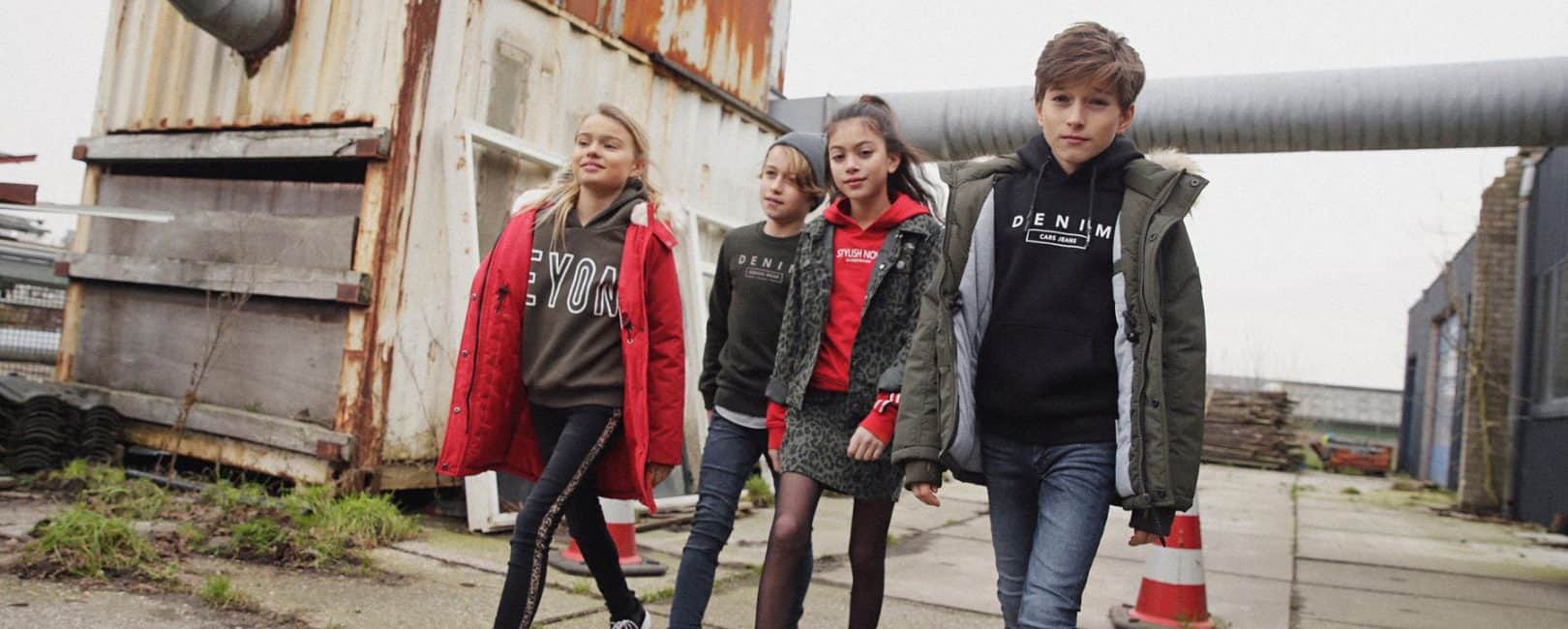
Cars children's clothing is well tailored to small. Cars jeans is a trendy Amsterdam company that was founded in the 80s. Their idea is to produce affordable, cool and comfortable jeans.
In addition to jeans, they also have sweaters, shirts and jackets. Nice and cool.
How does CKS fall?
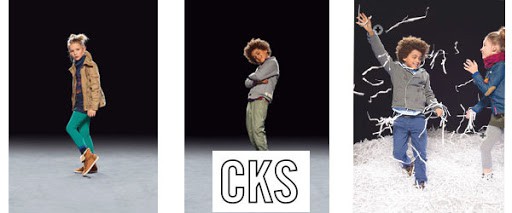
They say a one-of-a-kind look. This 100% Belgian brand uses powerful and cool prints, your garment can be a real eye-catcher if you want it!
CKS is small to normal, opinions differ on this. CKS runs from 2-16 years, for both boys and girls. As for the bottoms (trousers and skirts), the intermediate sizes are also available for 3 years and 5 years.
The tops do not have these intermediate sizes.
View the extensive collection here
How does Coolcat fall?
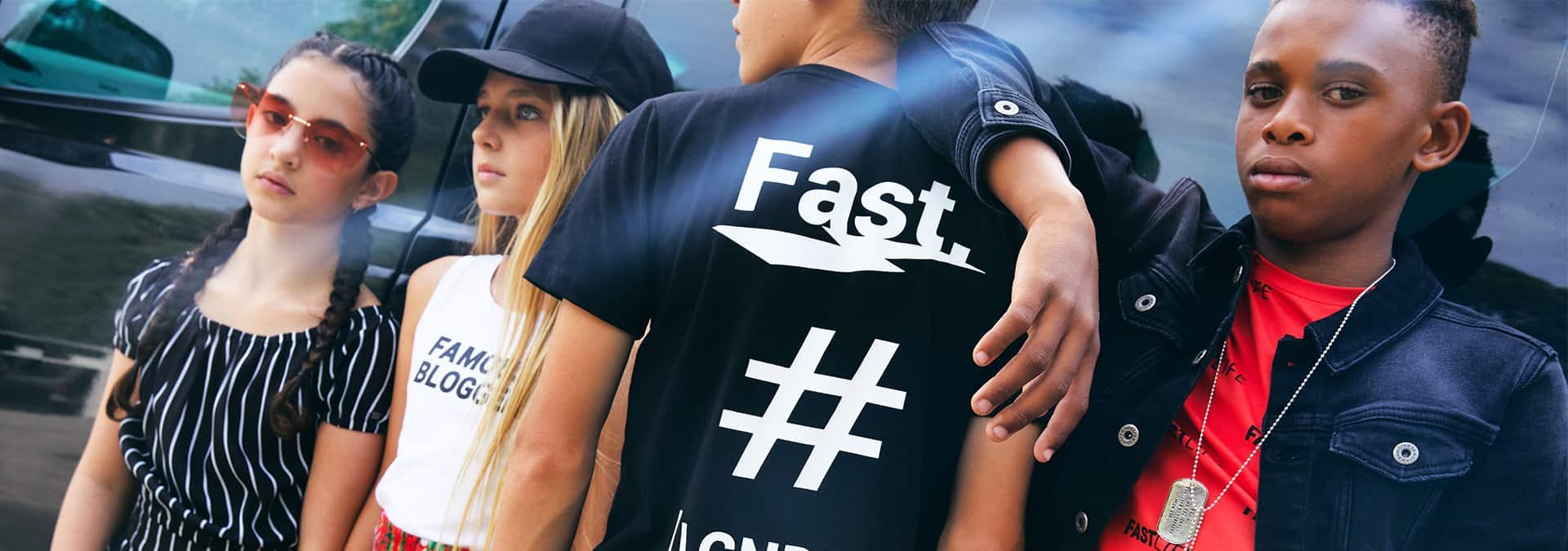
Coolcat is often small. I always buy at least one size bigger.
This cool, often (too) flashy, streetwear brand often has strikingly shiny details.
In the collection you will find a lot of tight girls' clothing and for the boys many sweaters and shirts with print.
View the extensive collection here
How does Dirkje fall?
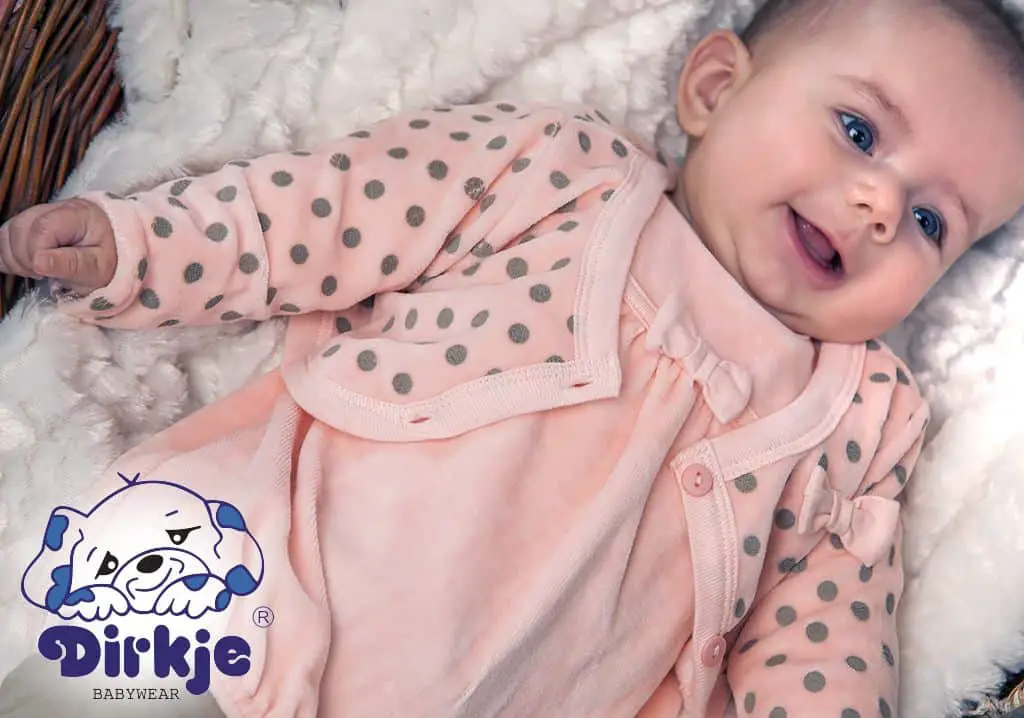
Since 1990 Dirkje has been designing baby clothes for children from 0 to 6 years from newborn size 40 to size 116.
Dirkje has an extensive collection with cute playsuits and stylish, sweet rompers, to hip and cool sweatpants.
From 92 to 116 the clothes are tailor-made, but Dirkje is small until 86, take one size bigger is my advice!
How does DJ Dutchjeans fall?
DJ Dutchjeans has been making cool urban children's clothing with a creative twist since 2005. Their designs are trendy, but also very comfortable.

The following can be said about the sizes of the clothing of DJ Dutchjeans: the sizes of the pants are usually quite narrow and the skirts still reach just above the knee.
However, there is elastane incorporated in each pants, which gives the pants stretch and gives them something.
The DJ Dutchjeans collection ranges from size 92 to 164. Their clothing is therefore intended for slightly older children between 2 and 14 years old.
On the basis of their size table you can look up the correct age in the sizes.
DJ Dutchjeans size chart
- maat 92; 2 years
- maat 98; 3 years
- maat 104; 4 years
- maat 110; 5 years
- maat 116; 6 years
- maat 122; 7 years
- maat 128; 8 years
- maat 134; 9 years
- maat 140; 10 years
- maat 146; 11 years
- maat 152; 12 years
- maat 158; 13 years
- maat 164; 14 years
How does Esprit children's clothing fall?
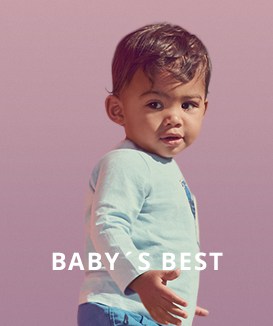
Esprit is a hip and 'down to earth' brand. The children's clothing has nice prints, lots of jeans and the necessary basics.
Esprit is normal to large. They have a baby collection that runs from 0-2 years.
The girls and boys sportswear run from XS to XL and the kids sizes go from 92 to 176.
Check more Esprit children's clothing here
How does Gabbiano fall?
Gabbiano is a clothing brand for fashion-conscious men and boys.
The trend-setting children's clothing is specially aimed at boys between 8 and 16 years old and is inspired by the men's collection.
The result is cool boys' clothing with an urban look.

This brand has a size table with European sizes in centimeters that belong to the sizes 140, 152, 164 and 176 from the boys' clothing collection.
You can easily measure the child's body measurements in advance and then choose the right size using this size chart.
The shirts are generally long and the jeans have a slim fit. The brand is generally big.
Check out the latest collection here
How does Geisha fall?
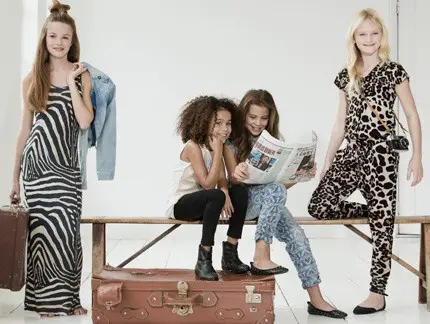
Geisha is a very cool brand with clothing that falls just between child and adult. Their clothes are generally quite large, so it is wise to keep the exact size of your child or slightly smaller.
View the collection here at bol.com
How does Hema children's clothing fall?
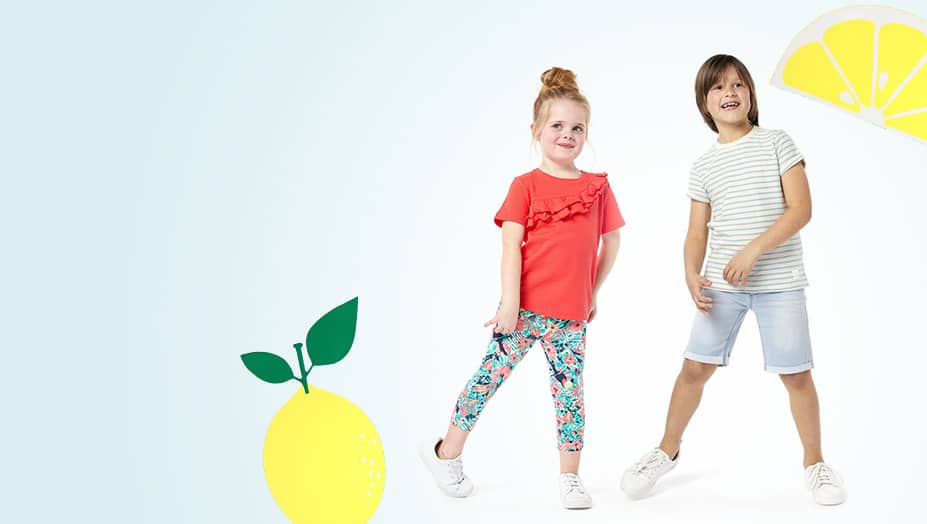
Children's clothing from Hema is often tailor-made, but sometimes on the broad side. Shirts often have long sleeves and some think they have a square cut.
I think Hema has nice and colorful clothing, with a touch of Dutch solidity. The prices of Hema are always good, the quality cannot be faulted!
Hema children's clothing size chart
Baby
- maat 50; 0-1 months
- maat 56; 1-2 months
- maat 62; 2-4 months
- maat 68; 4-6 months
- maat 74; 6-9 months
- maat 80; 9-12 months
- maat 86; 12-18 months
Girls and Boys
- maat 92; 1,5-2 years
- maat 98; 2-3 years
- maat 104; 3-4 years
- maat 110; 4-5 years
- maat 116; 5-6 years
- maat 122; 6-7 years
- maat 128; 7-8 years
- maat 134; 8-9 years
- maat 140; 9-10 years
- maat 146; 10-11 years
- maat 152; 11-12 years
- maat 158; 12-13 years
- maat 164; 13-14 years
- maat 170; 15 years
- maat 176; 16 years
How does H&M fall?
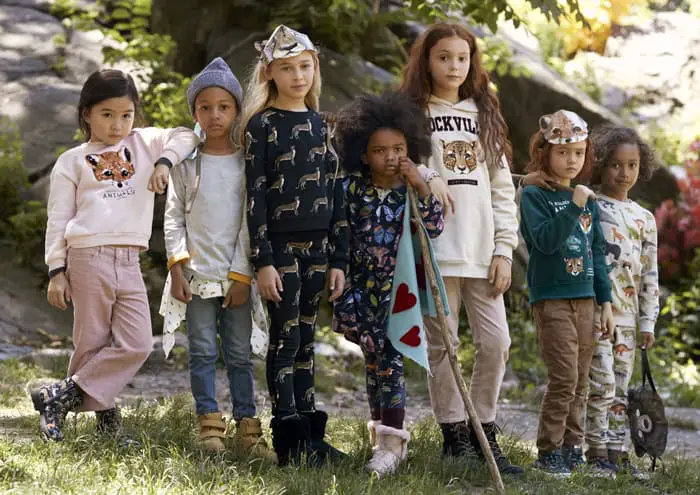
H & M's clothing is tailor-made or too big. So it is better not to buy 'on the growth'.
H&M has an extensive and fine Newborn collection in sizes 50 to 74, The Baby girls and Baby boys collection is available in sizes 68 to 104. The girls and boys collection runs from size 134 to 170.
How does Ikks fall?
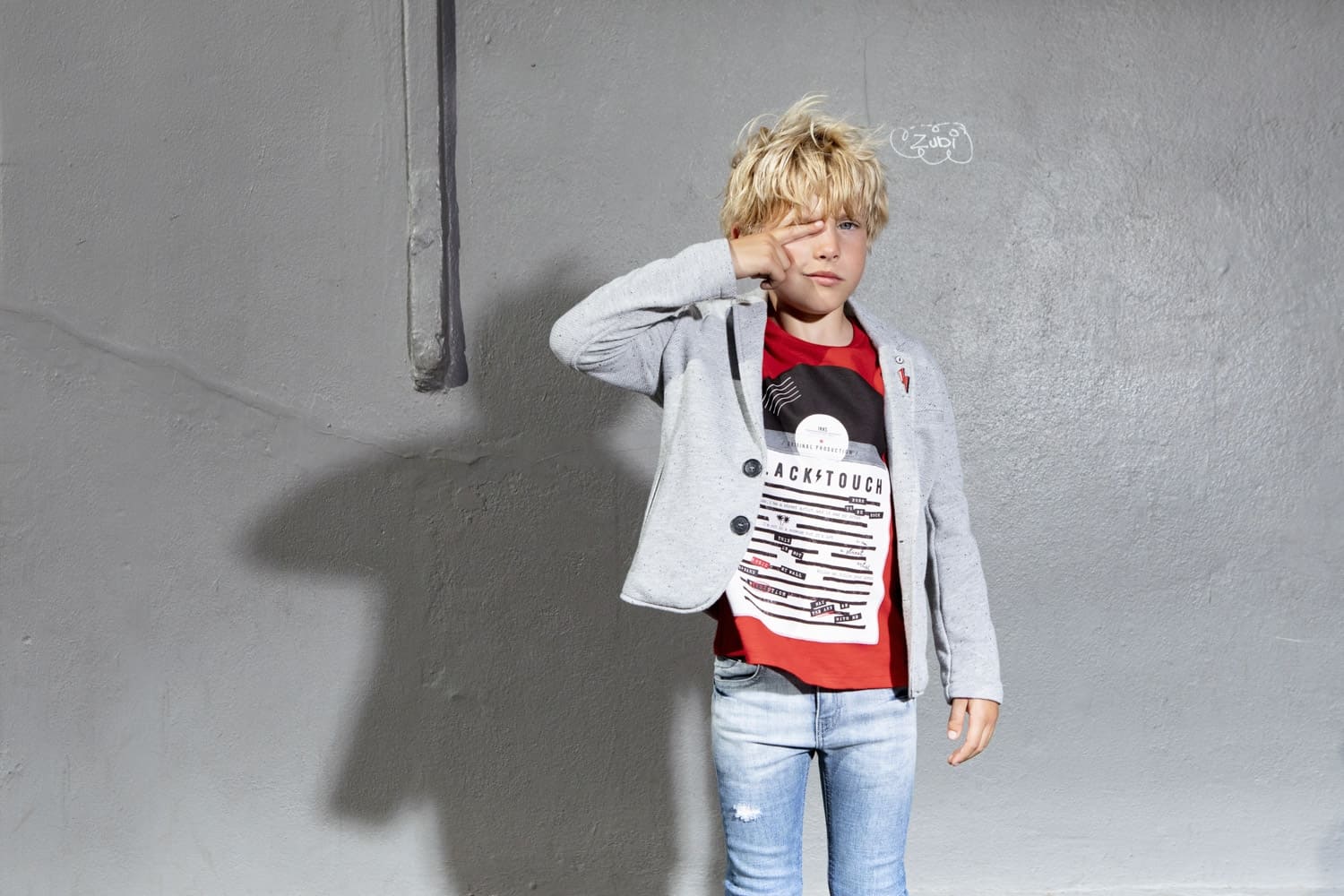
Our advice is that the tops are normally tailored. The pants are quite large in size. The IKKS baby collection is available in sizes 62 to 98. IKKS is a great French brand that wants to distinguish itself.
The baby girls collection is for children from 3 months to 3 years old. The IKKS girls' children's collection is available from 3 to 12 years old.
For hip teenage girls there is the collection with more pronounced silhouettes; WAY by IKKS, from 10 to 18 years old.
The entire IKKS boys' collection is available from 3 to 14 years old, the trendy WAY boys' clothing from 10 to 18 years, and the boys' baby fashion from 3 months to 3 years.
How does Imps & Elfs fall?
We know Imps & Elfs as one of the popular baby and children's clothing brands.
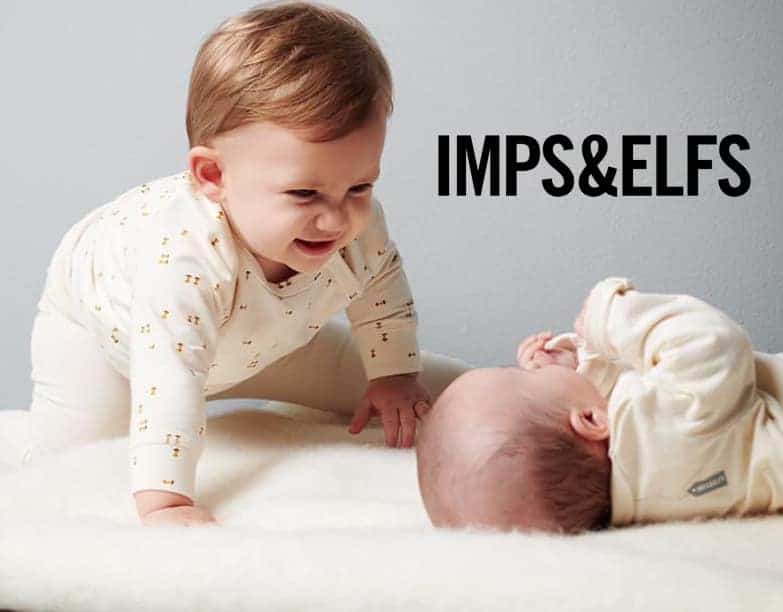
Their cuddly line of clothing for babies and toddlers is offered in sizes 50 to 104 and for the bigger children sizes 92 to 164 are available.
This brand is tailor-made and in some cases, even small.
It is a brand with a slim fit and often has longer sleeves and legs. The size advice is to either buy the size in which the child is now or a size larger.
For example, if the child is now 70 cm long, size 74 is immediately portable, or even choose a size larger, so size 80, just to be on the safe side.
How does Jollein fall?
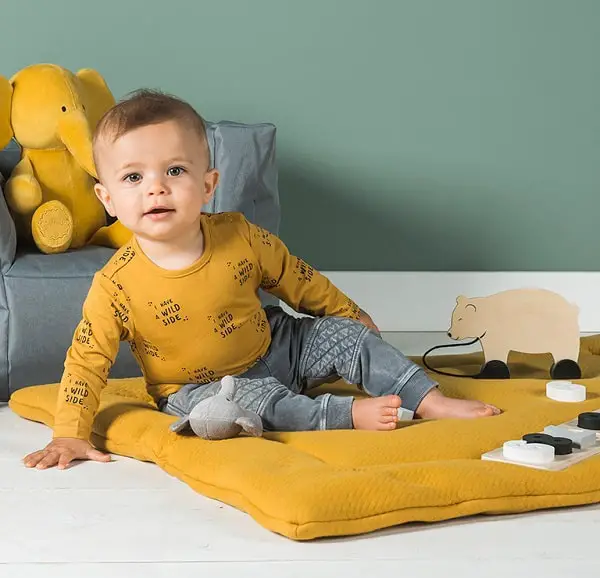
's clothes jollein fits to size. So you can just keep the size that your baby has at the moment.
If you want to give the clothes as a gift for a birth, it is more fun to choose a size 62/68, because the baby can wear it longer than the smallest size. Size 50/56 is suitable for babies from 0-2 months.
Jollein's clothing is made of organic cotton and available in only three sizes: 50/56, 62/68 and 74/80.
How does Jubel fall?
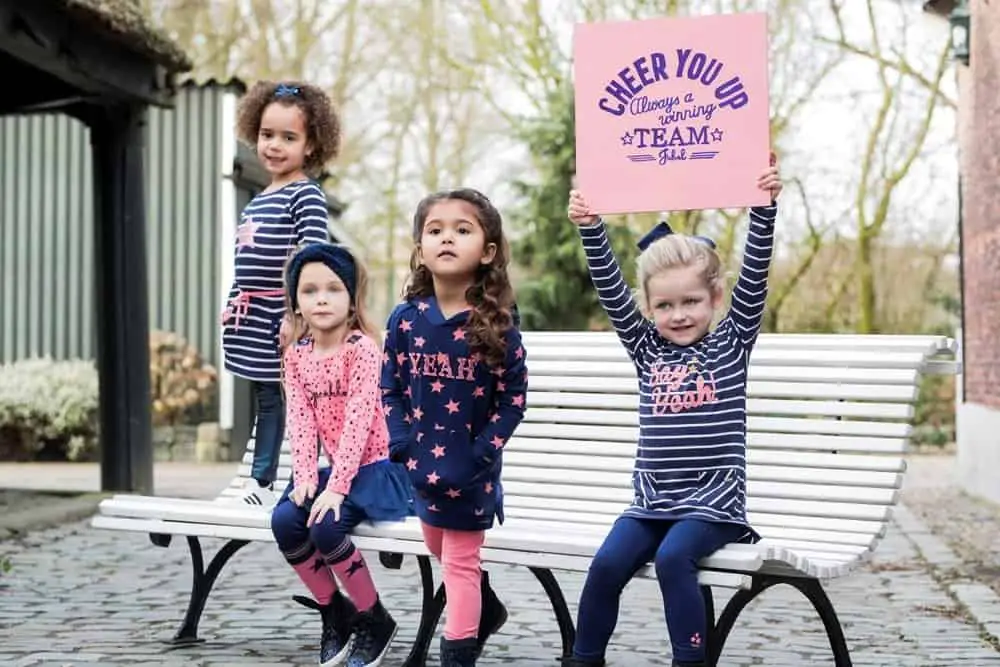
Jubel is the big sister of Feetje-baby, a Dutch brand for the 'girl girls' among us who also want to look tough.
The brand stands for joy! Clothes for school or for a lazy day. And don't forget the 'Pret-a-party' clothing for the hip kids!
Jubel girls' clothes can best be described as clothes for girls that are neither too big nor too small in size.
So you could actually say that Jubel's girls' clothes are tailor-made.
Available in sizes 92 to 140.
View the extensive collection here at Kixx
How does Kiabi fall?
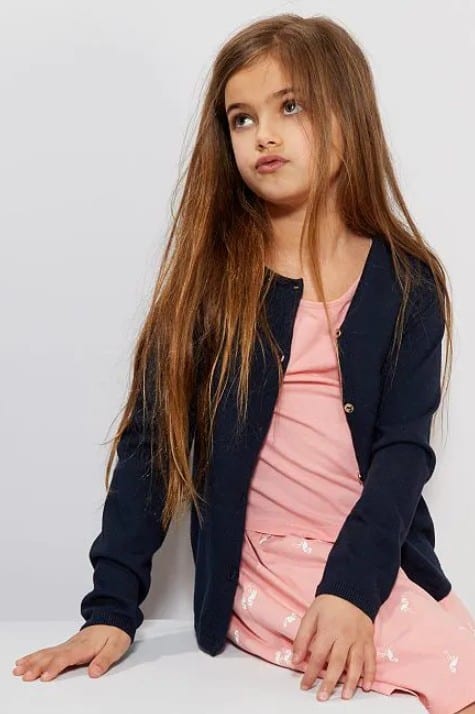
Soft colors, wonderful fabrics and beautiful prints characterize this brand.
Kiabi Clothing is quite different in size. The collection runs from 2 years to 18 years in the corresponding sizes 86 to 182.
They also have plus sizes for the fuller kids!
Kiabi size chart
Baby
- maat 44; 00 month
- maat 50; 0 month
- maat 56; 1 month
- maat 62; 3 months
- maat 68; 6 months
- maat 71; 9 months
- maat 74; 12 months
- maat 80; 18 months
- maat 86; 24 months
- maat 92; 36 months
Girls & Boys
- maat 86; 2 years
- maat 92; 3 years
- maat 104; 4 years
- maat 110; 5 years
- maat 116; 6 years
- maat 122; 7 years
- maat 128; 8 years
- maat 134; 9 years
- maat 140; 10 years
- maat 152; 12 years
- maat 158; 14 years
- maat 164; 16 years
- maat 182; 18 years
How does Kiddo fall?

Kiddo distinguishes itself with an eye for quality and wearing comfort translated into cool fashion for kids.
Kiddo brings 2 collections per year, for boys and girls in sizes 92 to 164. The items are fashionable, affordable and of good quality.
The brand is quite small. When in doubt, take a size up. Every year Kiddo launches two collections from size 92 to 164.
How does Gravel fall?
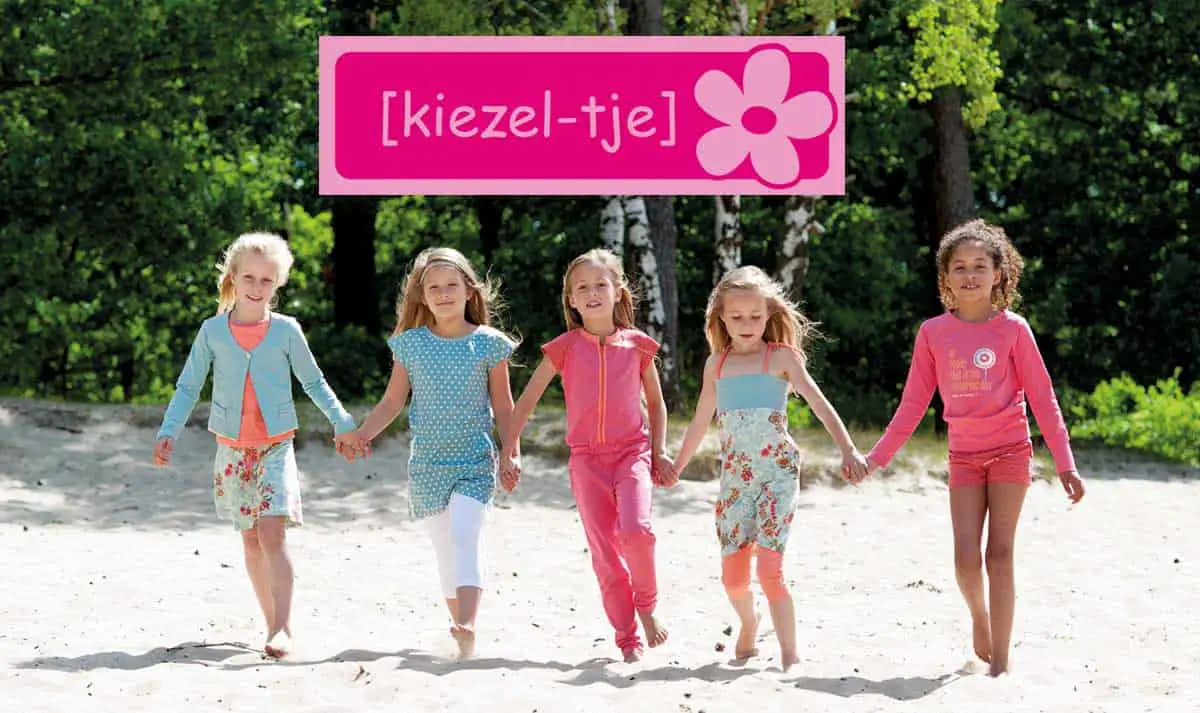
Kiezeltje is a special Dutch clothing brand for girls. It stands out because of the colors and prints with always a special detail.
Quality fabrics and cool prints, you will recognize the design immediately.
The fits fit well and the outfits can be used for parties as well as playful.
Every season, this brand pays attention to the fit so that both the baby and the girls collection fits well.
The girls' clothing from Kiezeltje runs from sizes 98-104 to 146-152 and is usually well tailored.
The baby clothes from Kiezeltje run from size 68 to 92. For larger sizes you can go to Kiezeltje's big sister, KIE stone.
How does Koeka fall?

Beautiful soft colors and beautiful fabrics characterize this unique brand. Very romantic, elegant and dreamy items, do you want something very original? Koeka can offer you this.
The clothing sizes are normal; they clearly indicate if clothes are smaller or larger, very nice!
The baby collection is available from size 50 to 86 and the Boy's and Girls collection from size 92 to 128.
View the collection at Wehkamp
How does Kokonoko fall?
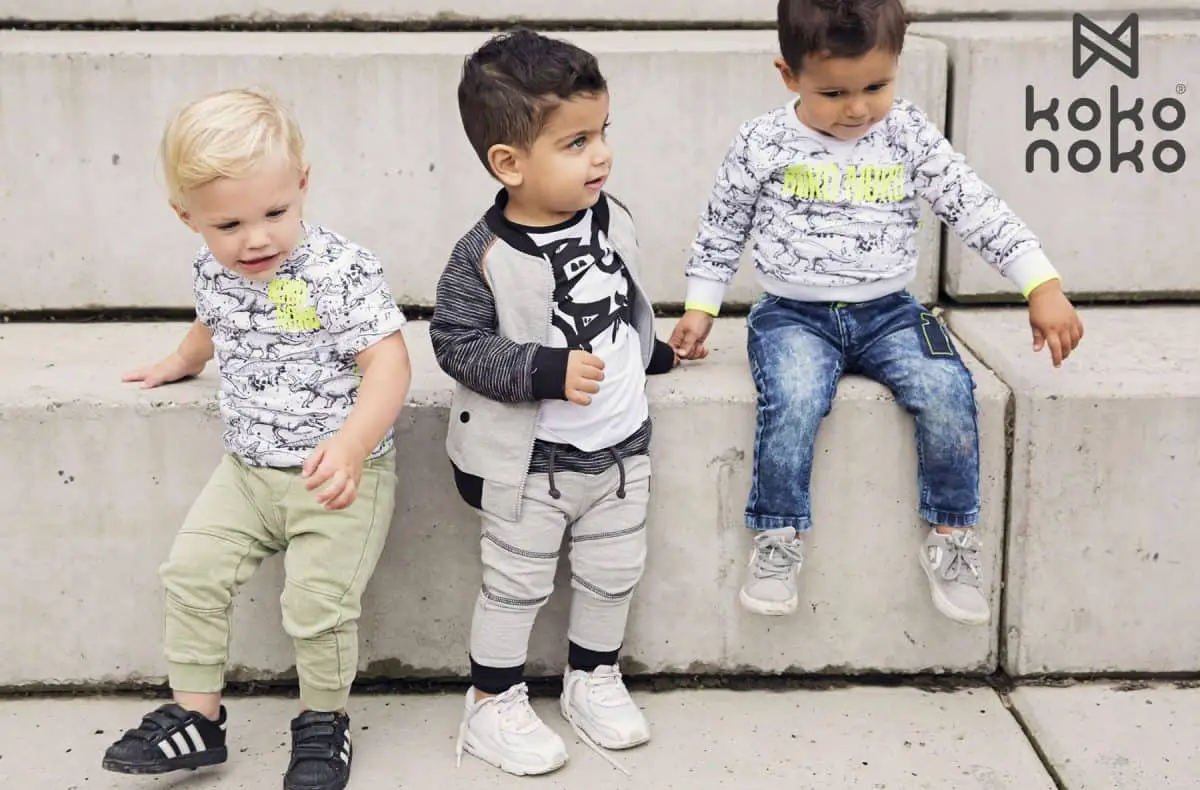
The brand in baby and children's clothing. Nice stubborn and trendy clothing from size 56 to 128.
Kokonoko has cool prints for cool boys and girls and is tailored to spacious.
Kokonoko size chart
Baby
- maat 50; 0-1 months
- maat 56; 1-2 months
- maat 62; 2-4 months
- maat 68; 4-6 months
- maat 74; 6-9 months
- maat 80; 9-12 months
- maat 86; 12-18 months
Kids
- maat 92; 2 years
- maat 98; 3 years
- maat 104; 4 years
- maat 110; 5 years
- maat 116; 6 years
- maat 122; 7 years
- maat 128; 8 years
How does Lidl children's clothing fall?
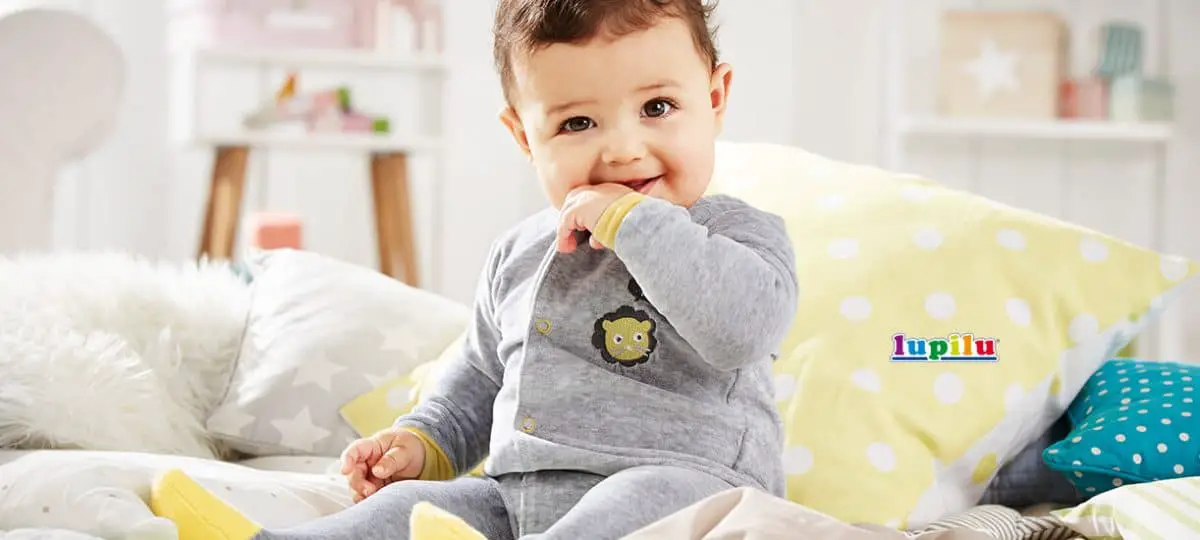
According to some, Lidl baby clothes are quite large.
Most baby clothes are made from wonderfully soft, organic cotton, which is kind to the environment. And no, high-quality baby clothing does not have to come with an expensive price tag, says Lidl.
On the Lidl site you can, very conveniently, enter the sizes of your child, this way you are always in the right place!
How does Like Flo fall?
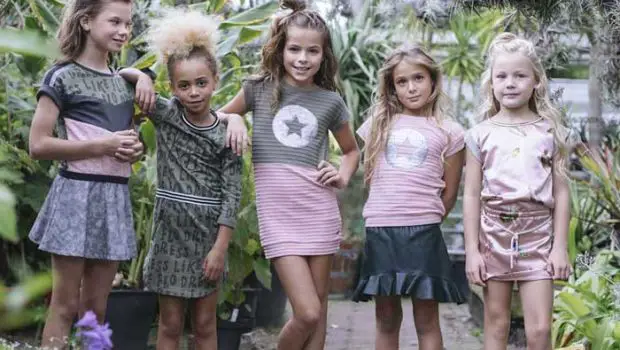
Nice and super hip brand.
My experience is that Flo is not small, but quite narrow. Ideal for small kids. They can wear Flo in their normal size. The clothes fit nicely.
Baby sizes go from 68 to 92 and children's sizes from 92 to 164.
How does LoFff fall?
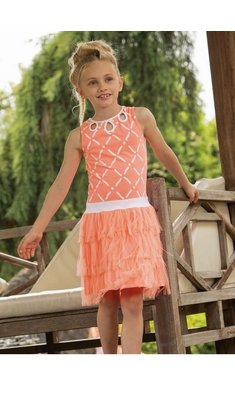
The children's clothing from LoFff is available in sizes 92 to 152. This clothing normally falls to slightly roomy.
LoFff started in 2005, it is a beautiful brand, for girls from 3 months to about 16 years old, for girls who love colorful and festive clothing.
LoFff also has fans abroad, especially in Ireland, Germany and even Japan!
How does Mango kids fall?
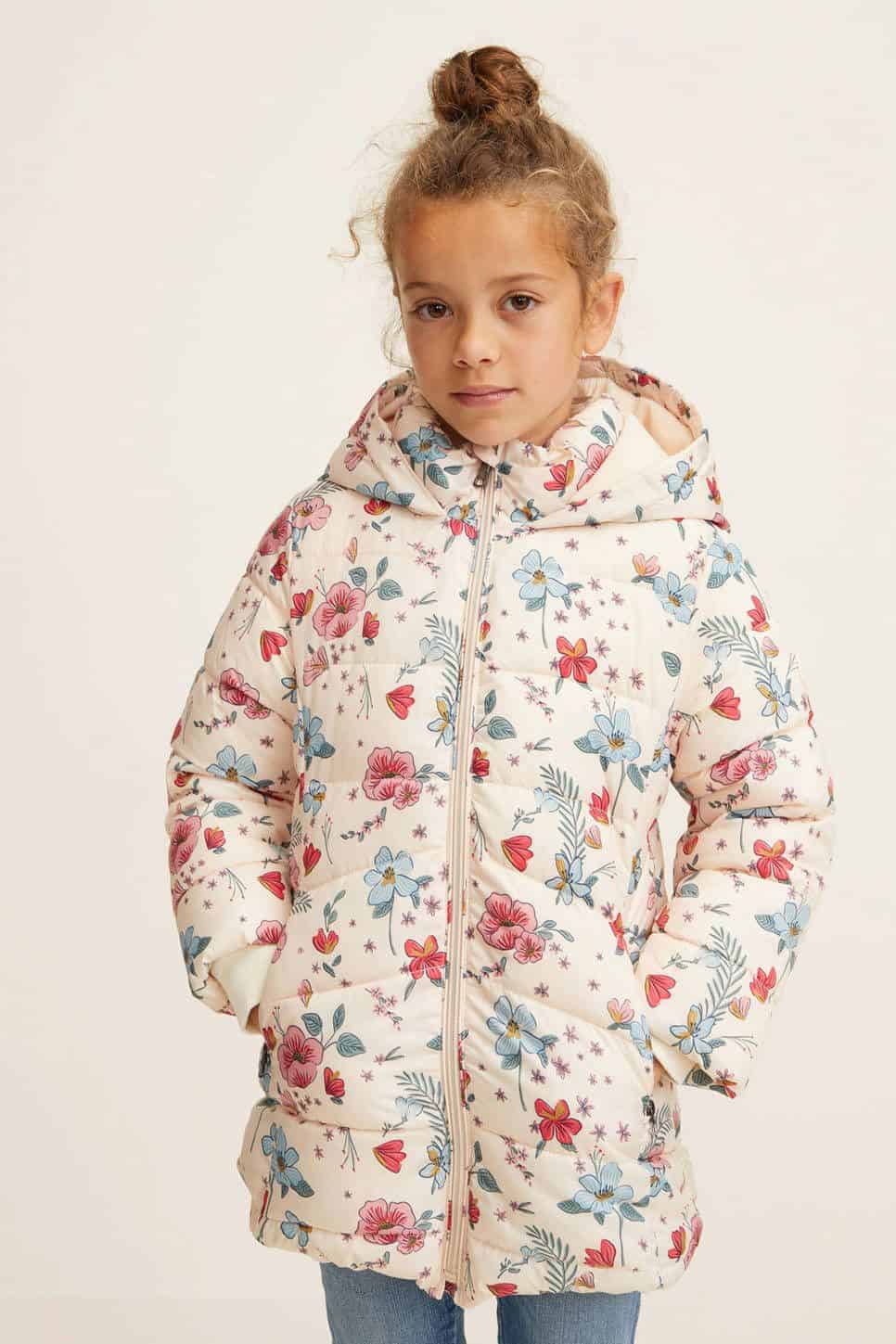
Mango has many nice pieces of clothing with cool prints for girls and boys.
Mango generally runs small.
Mango Kids size chart
Baby
- maat 56: 0-1 month
- maat 62: 1-3 months
- maat 68: 3-6 months
- maat 74: t6-9 months
- maat 80: 9-12 months
- maat 86: 12-18 months
- maat 92: 8-24 months
- maat 98: 24-36 months
Girls & boys
- maat 104; 3-4 years; XS
- maat 110; 4-5 years; XS
- maat 116; 5-6 years; XS/S
- maat 122; 6-7 years; S
- maat 128; 7-8 years: S/M
- maat 134; 8-9 years: M
- maat 140; 9-10 years; M/L
- maat 146; 10-11 years; L
- maat 152; 11-12 years; L/XL
- maat 158; 12-13 years; XL
- maat 164; 13-14 years; XL
View the Mango Kids collection at Wehkamp
How does Molo fall?
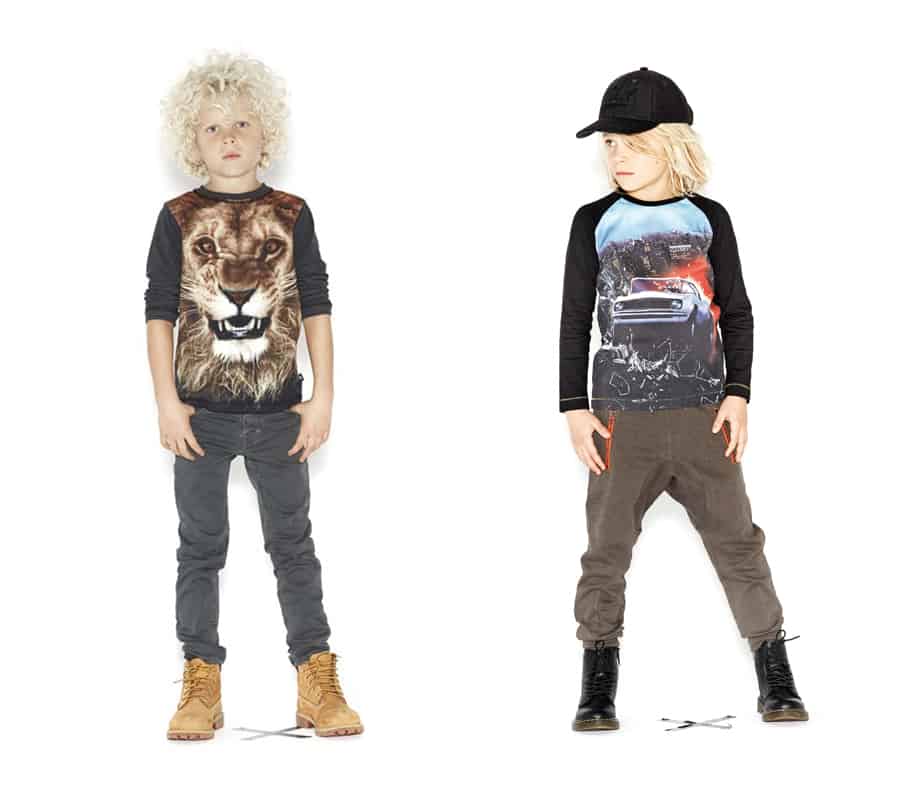
This hip, Danish brand has a spacious fit, think of the largest size in the combination sizes, often even a bit larger. Large prints and daring combinations are presented by Molo!
Molo Baby Girls and Baby Boys is available in sizes 56 to 86. Molo Kids Girls and Kids Boys can be ordered in sizes 86 to 164.
How does Name It fall?
The Name It brand has four collections with cool children's clothing, namely
- the Name It Newborn collection,
- the Name It Mini collection,
- the Name It Kids collection and
- a collection for teenagers
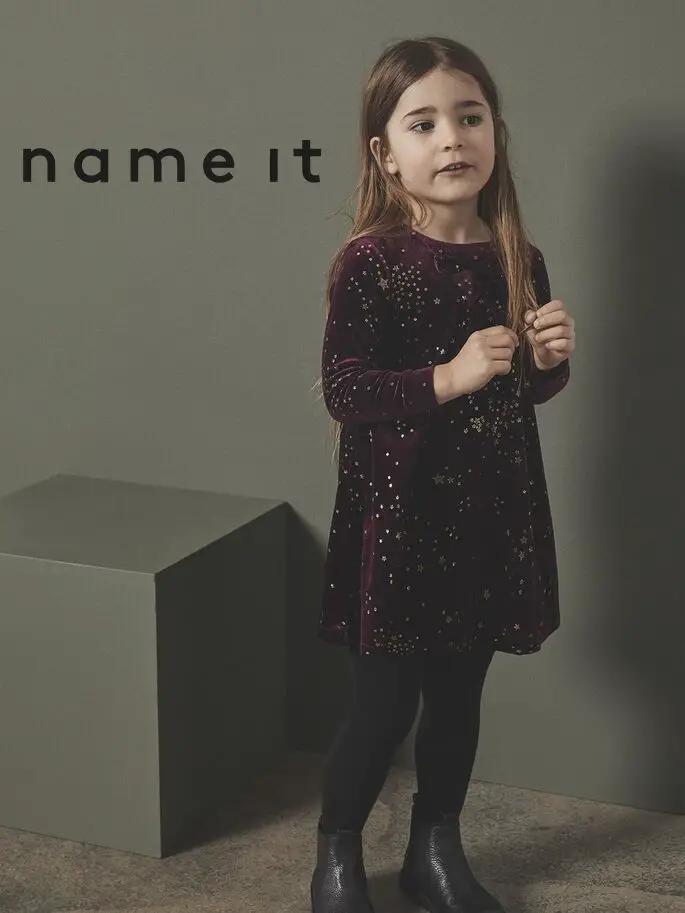
The Name It newborn collection is perfect for newborn babies and starts from size 40 and runs up to size 80.
The collection then switches to the Name it Mini collection in sizes 80 to 110. Larger kids from size 116 to 164 can also wear this brand. (6-14 Kids and 10-16 Teens)
In general, Name It is a comfortable brand with good sizes.
The outerwear has a normal fit and sometimes a bit larger, so it can be worn longer.
The pants have a normal fit and in some cases even a little too long. Depending on the model, the pants usually have a slim fit.
Name It size chart
Newborn
- maat 50: 0 months; leg length 16
- maat 56: 2 months; leg length 18
- maat 62: 4 months; leg length 21
- maat 68: 6 months; leg length 24
- maat 74: 9 months; leg length 27
- maat 80: 12 months; leg length 30
Mini
- maat 86: 18 months; leg length 33
- maat 92: 24 months; leg length 37
- maat 98: 36 months; leg length 41
- maat 104; 4 years; leg length 45
- maat 110; 5 years; leg length 48,5
Kids & Teens
- maat 116; 6 years; leg length 52
- size 122; 7 years; leg length 55,5
- size 128; 8 years: leg length 59
- size 134; 9 years: leg length 61
- size 140; 10 years; leg length 65
- size 146; 11 years; leg length 68
- size 152; 12 years; leg length 71
- size 158; 13 years; leg length?
- size 164; 14 years; leg length?
How does Nik & Nik fall?
Nik & Nik, is also a clothing brand for kids and makes cool urban clothing for kids between 1.5 and 16 years old.
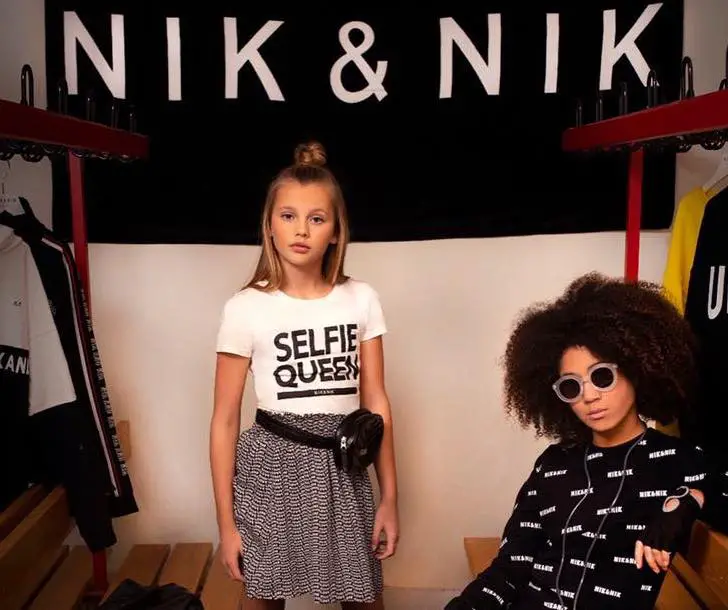
The brand publishes a complete collection for both boys and girls and is the children's line of Nikki Plessen (Nikki).
The different items of clothing can be combined well. The line launches a new item every month, keeping the excitement in it throughout the year.
The sizes run from size 92 (2 years) to size 176 (16 years).
The fit of this brand is good and can be bought to size.
Nik & Nik size chart
Nik Boys & Girls
- size 92; 2 years; leg length 34
- size 98; 3 years; leg length 37
- size 104; 4 years; leg length 41
- size 110; 5 years; leg length 44
- size 116; 6 years; leg length 47
- size 122; 7 years; leg length 50
- size 128; 8 years; leg length 54
- size 134; 9 years; leg length 59
- size 140; 10 years; leg length 62
- size 146; 11 years; leg length 65
- size 152; 12 years; leg length 67
- size 158; 13 years; leg length 69
- size 164; 14 years; leg length 72
- size 172; 15 years; leg length 74
- size 176; 16 years; leg length 77
How does Noppies fall?
The cheerful clothing brand for kids Noppies distinguishes between 2 collections:
- sizes 44 to 86 for babies
- size 74 t / m 128 for the slightly larger kids
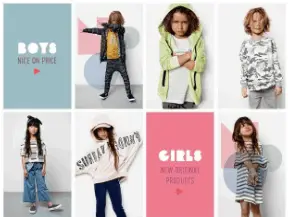
Noppies baby clothes are generally a bit smaller.
When in doubt about the right size, it would be better to choose a larger size than the one in which the child is now.
The fit is slightly smaller and narrower than other baby clothing brands.
However, the children's clothing has a better fit and can be bought to size.
The Noppies size chart is handy to use when choosing the right size.
Noppies size chart
Baby
- size 40: premature; leg length 16
- size 50: 0-1 months; leg length 16-19
- size 56: 1-2 months; leg length 19-20
- size 62: 2-4 months; leg length 20-22
- size 68: 4-6 months; leg length 22-24
- size 74: 6-9 months; leg length 24-27
- size 80: 9-12 months; leg length 27-31
- size 86: 12-18 months; leg length 31-34
Kids
- size 86: 12-18 months; leg length 31-34
- size 92: 18-24 months; leg length 34-38
- size 98: 24-36 months; leg length 38-41
- size 104; 3-4 years; leg length 41-45
- size 110; 4-5 years; leg length 45-49
- size 116; 5-6 years; leg length 49-52
- size 122; 6-7 years; leg length 52-56
- size 128; 7-8 years: leg length 56-59
View the entire collection here
How does O'chill fall?

O'chill shows itself through fine colors, romantic prints and the many FUN items.
The O'Chill children's clothing collection for girls is available in sizes 92 to 140/146. The clothing is generally very well tailored.
The items fit nicely and it is therefore not necessary to order a size smaller or larger.
Check out the latest collection here
How does Oilily children's clothing fall?
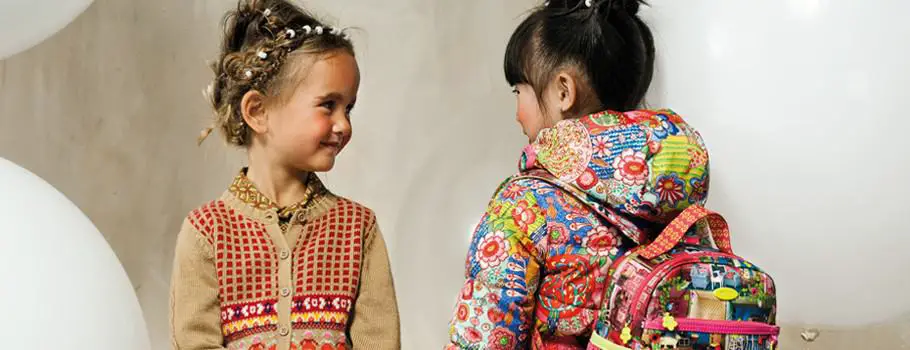
A beautiful clothing brand that makes clothes for women and children. Mum and kids can go to this beautiful brand.
The Oilily ladies and girls clothing is elegant and made of soft and supple fabrics. The clothing often falls loosely around the body, but accentuates the right points for a beautiful figure. Fits a bit small.
Oilily children's clothing size chart
Babies - Girls
- size 62: 4 months; leg length 18,9
- size 68: 6 months; leg length 22,3
- size 74: 9 months; leg length 25,7
- size 80: 12 months; leg length 29,1
- size 86: 1,5 years; leg length 32,8
- size 92: 2 years; leg length 36,4
- size 98: 3 years; leg length 40,1
- size 104; 4 years; leg length 43,7
- size 110; 5 years; leg length 47,4
- size 116; 6 years; leg length 51
- size 122; 7 years; leg length 54.4
- size 128; 8 years: leg length 57,8
- size 134; 9 years: leg length 61
- size 140; 10 years; leg length 64,6
- size 146; 11 years; leg length 67,7
- size 152; 12 years; leg length 70,8
- size 158; 13 years; leg length 73,9
- size 164; 14 years; leg length 77
View the extensive collection here
How does O'Neill children's clothing fall?
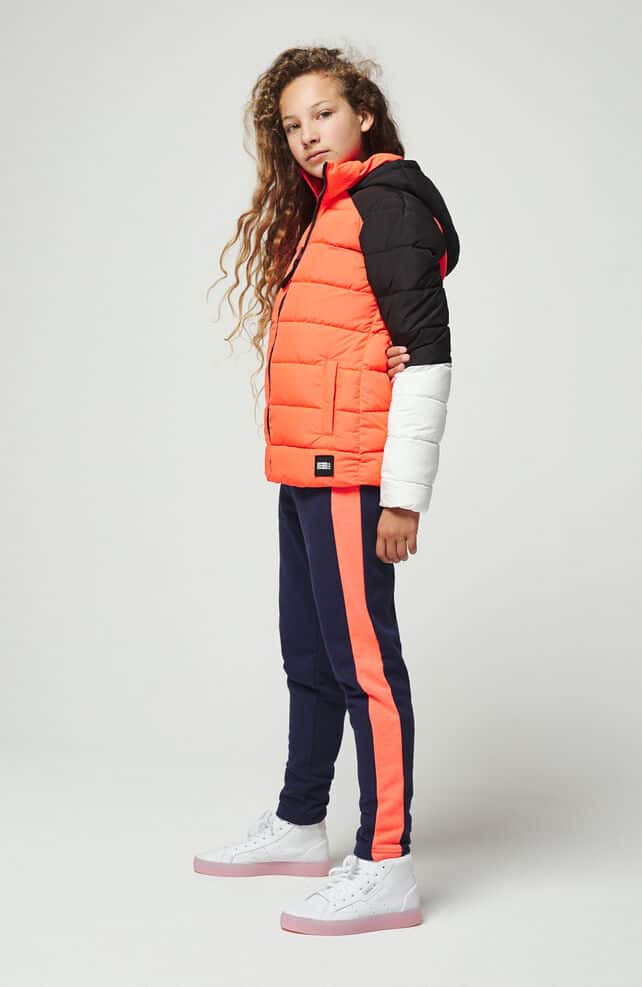
This sporty, originally surf brand, has its own style.
O'neill has a normal fit, if the measurements fall between two sizes, we recommend that you take the larger size.
O'Neill children's clothing size chart
Boys & Girls
- size 92; 1,5-2 years
- size 98; 2-3 years
- size 104; 3-4 years
- size 110; 4-5 years
- size 116; 5-6 years
- size 122; is not there
- size 128; 7-8 years
- size 134; is not there
- size 140; 9-10 years
- size 146;
- size 152; 11-12 years
- size 158; is not there
- size 164; 13-14 years
- size 170; is not there
- size 176; 14-15 years
How does Petrol children's clothing fall?
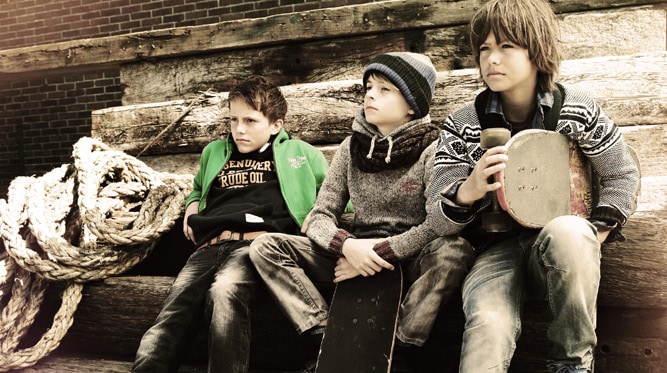
Running, playing, frolicking: you need good clothes for that. Clothing that can take a beating. You can find that children's clothing at Petrol.
Whatever you are looking for, from sweater to shirt to jeans. Always with that cool Petrol look, with stripes, dots, prints or a plain look. Petrol is normal; use their size chart.
Petrol children's clothing size chart
Boys & Girls
- size 92; 1,5-2 years
- size 98; is not there
- size 104; 3-4 years
- size 110; is not there
- size 116; 5-6 years
- size 122; is not there
- size 128; 7-8 years
- size 134; is not there
- size 140; 9-10 years
- size 146; is not there
- size 152; 11-12 years
- size 158; is not there
- size 164; 13-14 years
- size 170; is not there
- size 176; 16 years
View the Petrol collection here
How does Prenatal children's clothing fall?
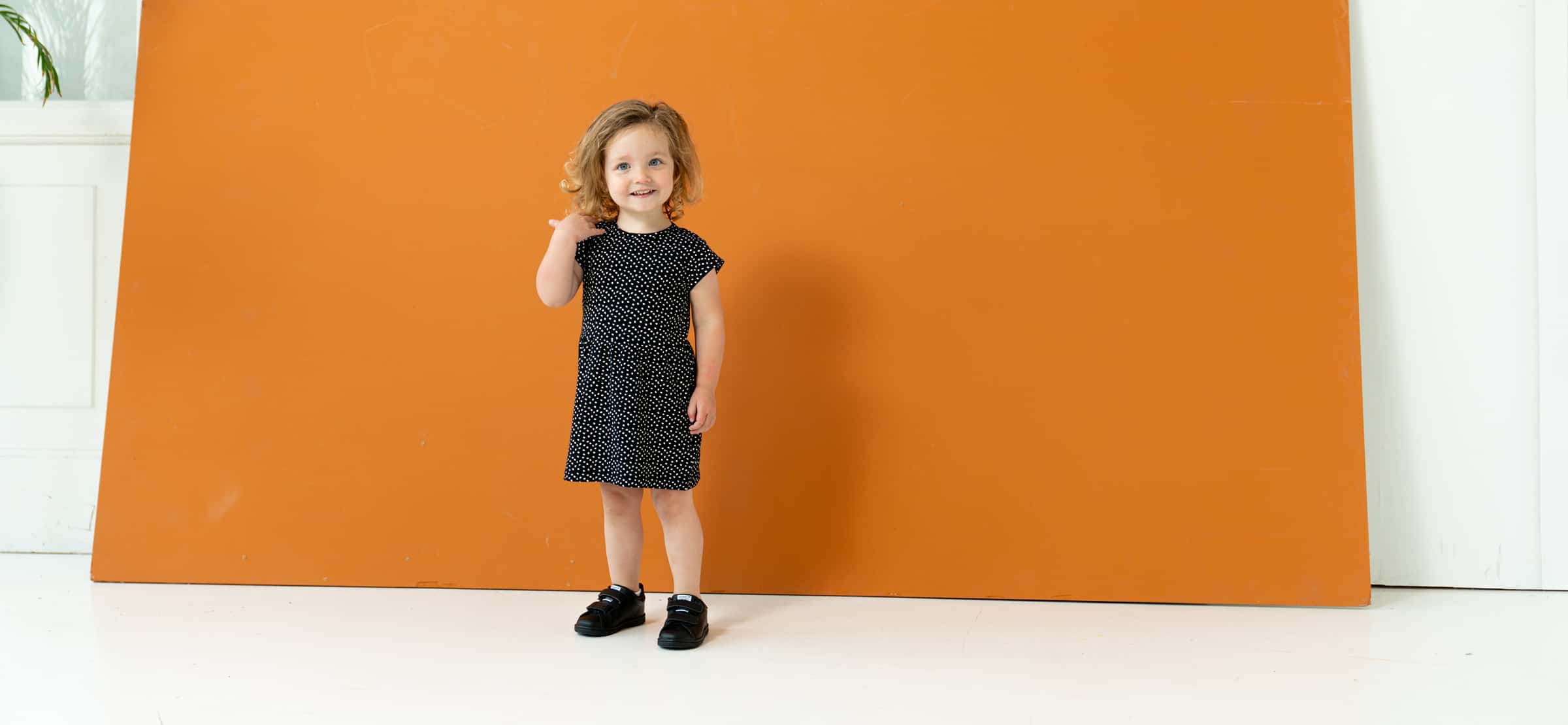
The baby collection starts at size 44! And runs up to size 68. The toddler-toddler-toddler collection starts at size 74.
The clothing of this fun, basic brand is reasonably tailored.
Prenatal size chart
Baby to toddler
- size 44-50; 0-1 month
- size 56; 1-2 months
- size 62; 2-4 months
- size 68; 4-6 months
- size 74; 6-9 months
- size 80; 9-12 months
- size 86; 12-18 months
- size 92; 2 years
- size 98; 3 years
- size 104; 4 years
- size 110; 5 years
How does Primark clothing fall?
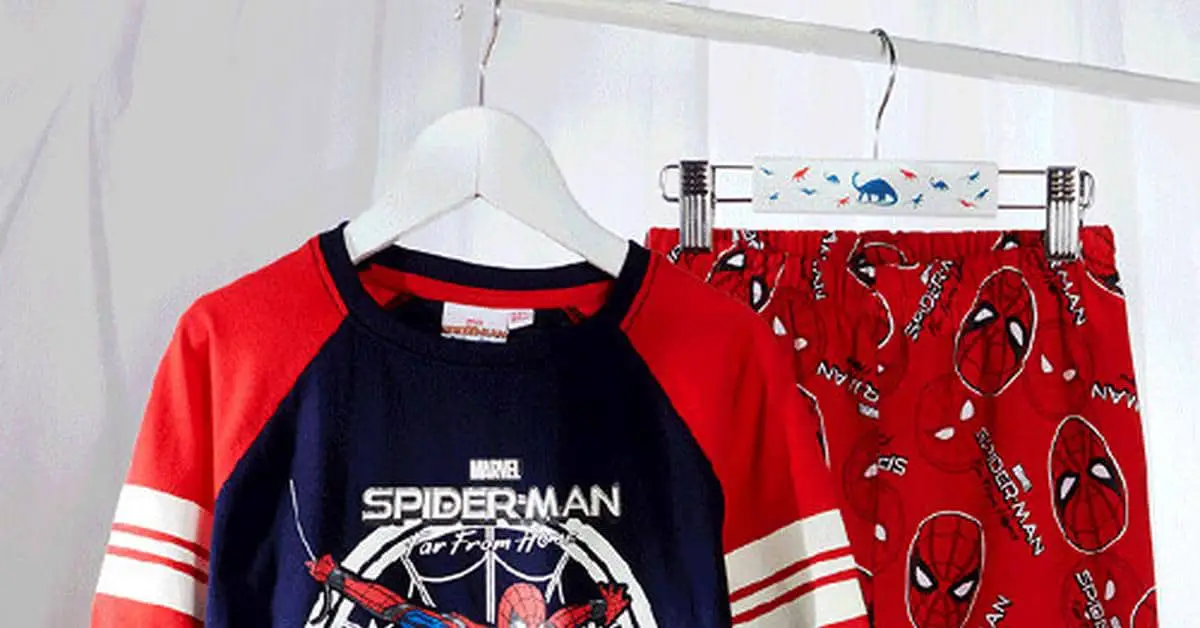
The Primark brand is normal to small. Primark has a lot of nice baby and kids clothes in its collection. The prices of these items are very low.
Primark kids clothing size chart
Baby
- size 44-50; 0 month
- size 50-56; up to 1 month
- size 56-62; 0-3 months
- size 62-68; 3-6 months
- size 68-74; 6-9 months
- size 74-80; 9-12 months
- size 80-86; 12-18 months
- size 86-92; 18-24 months
- size 92-98; 24-36 months
Girls & Boys
- size 86-92; 18-24 months
- size 92-98; 24-36 months
- size 98-104; 3-4 years
- size 104-110; 4-5 years
- size 110-116; 5-6 years
- size 116-122; 6-7 years
- size 122-128; 7-8 years
- size 128-134; 8-9 years
- size 134-140; 9-10 years
- size 140-146; 10-11 years
- size 146-152; 11-12 years
- size 152-158; 12-13 years
How does Quapi fall?
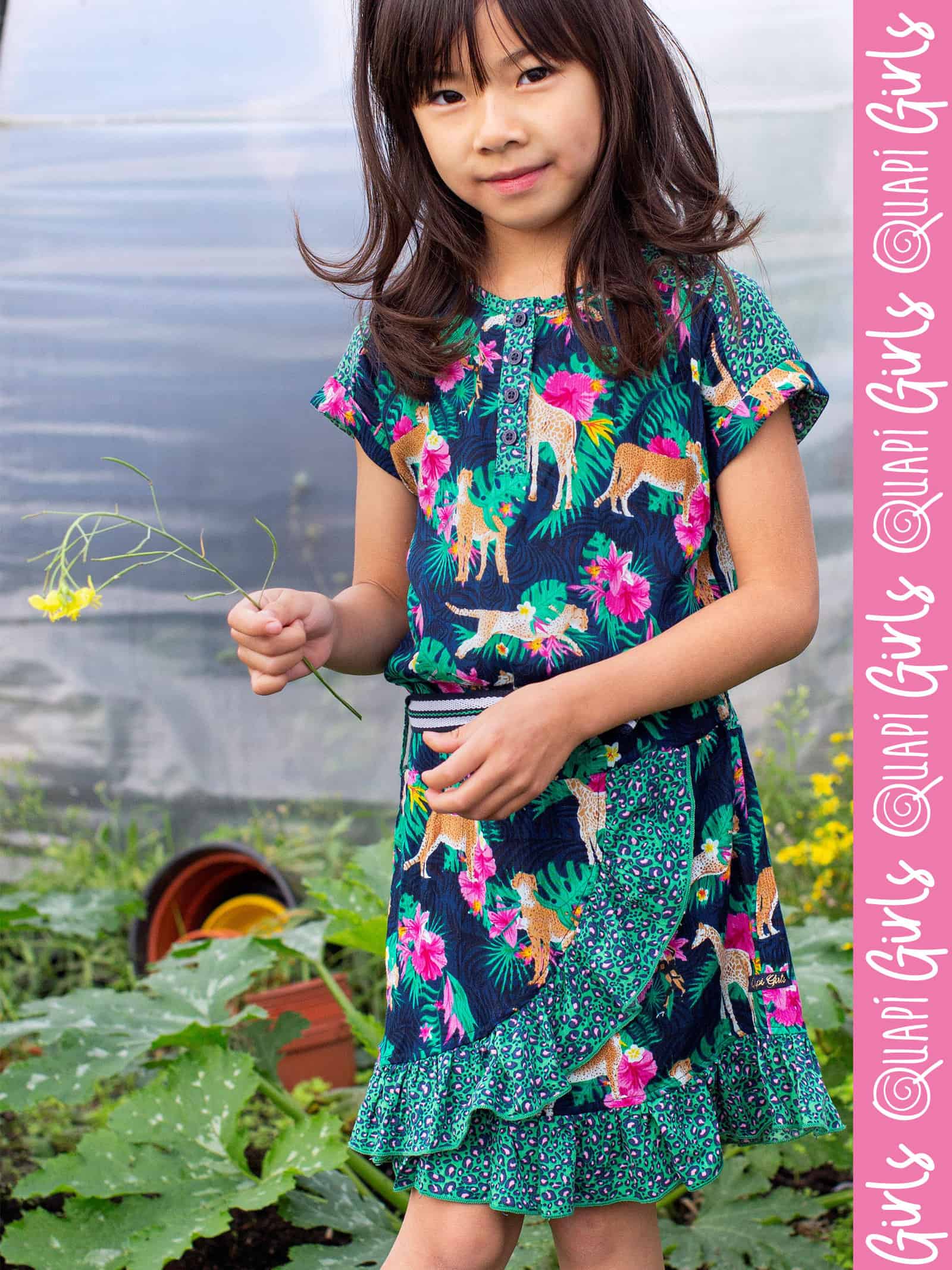
The fit of Quapi children's clothing is according to the Dutch dimensions, so the sizes are normal. Quapi is available in sizes 92, 98-104, 110-116, 122-128, 134-140 and 146-152.
The baby clothes run from size 50 to 86.
Quapi size chart
Newborn
- size 50; up to 1 month
- size 56; 1-2 months
- size 62; 2-4 months
- size 68; 4-6 months
Baby
- size 56; 1-2 months
- size 62; 2-4 months
- size 68; 4-6 months
- size 74; 6-9 months
- size 80; 9-12 months
- size 86; 12-18 months
Kids
- size 86; 12-18 months
- size 92; 18-24 months
- size 98; 2-3 years
- size 104; 3-4 years
- size 110; 4-5 years
- size 116; 5-6 years
- size 122; 6-7 years
- size 128; 7-8 years
- size 134; 8-9 years
- size 140; 9-10 years
- size 146; 10-11 years
- size 152; 11-12 years
- size 158; 12-13 years
- size 164; 13-14 years
- size 170; 14-15 years
- size 176; 15-16 years
Check out the latest collection here
How does Raizzed fall?

With regard to Raizzed's children's clothing, everything is exactly tailored for both boys and girls.
The clothing is available in sizes 104 to 176. For the size chart you can look at 'Vingino'. Raizzed is part of Vingino.
How does Retour Jeans fall?

Nice jeans, shirts, tops and trouser suits for trendy girls and boys.
Return jeans are quite narrow and small, see their size chart below;
Return Jeans size chart
Return Girls & Boys
- size 92/2; 1,5 years; leg length 34
- size 98/3; 3 years; leg length 37
- size 104/4; 4 years; leg length 41
- size 110/5; 5 years; leg length 44
- size 116/6; 6 years; leg length 47
- size 122/7; 7 years; leg length 50
- size 128/8; 8 years; leg length 54
- size 134/9; 9 years; leg length 59
- size 140/10; 10 years; leg length 62
- size 146/11; 11 years; leg length 65
- size 152/12; 12 years; leg length 67
- size 158/13; 13 years; leg length 69
- size 164/14; 14 years; leg length 72
- size 170/15; 15 years; leg length 74
- size 176/16; 16 years; leg length 77
Check out the latest collection here
How does River Island children's clothing fall?
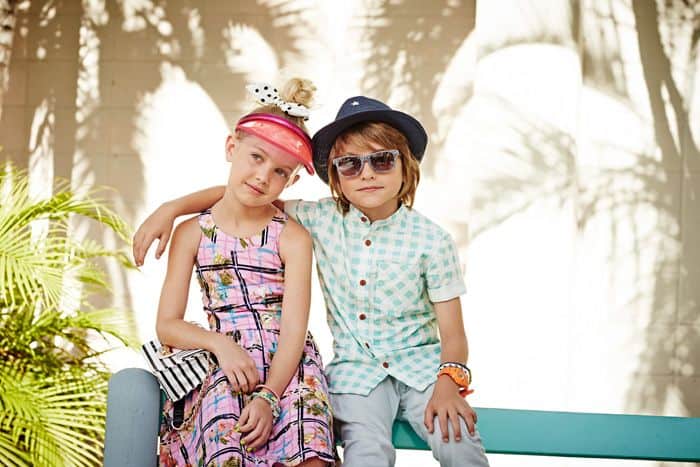
River Island children's clothing is quite spacious, so pay attention to the sizes.
River Island children's clothing size chart
Baby, Girls & Boys
- size 62; 0-3 months
- size 68; 3-6 months
- size 74; 6-9 months
- size 80; 9-12 months
- size 86; 12-18 months
- size 92; 1,5-2 years
- size 98; 2-3 years
- size 104; 4 years
- size 110; 5 years
- size 116; 6 years
- size 122; 7 years
- size 128; 8 years
- size 134; 9 years
- size 140; 10 years
- size 146; 11 years
- size 152; 12 years
How does S.Oliver fall?

S.Oliver, a nice German brand with clothing for all ages.
S. Oliver is just true to size, nice, a bit narrow. The sizes run from 50 to 176.
How does Terstal children's clothing fall?
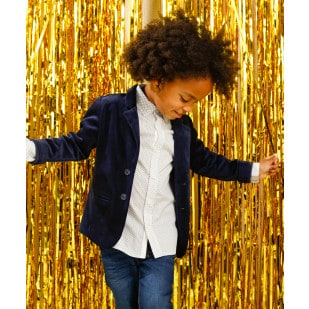
Nice fashion with funny prints for a very low price at Terstal.
Differs greatly in boys and girls sizes.
Terstal children's clothing size chart
Baby & kids
- size 50; 0 month
- size 56; 1-2 months
- size 62; 2-4 months
- size 68; 5-6 months
- size 74; 7-9 months
- size 80; 9-12 months
- size 86; 12-18 months
- size 92; 1,5-2 years
- size 98/104; 3-4 years
- size 110/116; 5-6 years
- size 122/128; 7-8 years
- size 134/140; 9-10 years
- size 152; 11-12 years
- size 164; 13 years
- size 176: 14+
How does Tommy Hilfiger children's clothing fall?
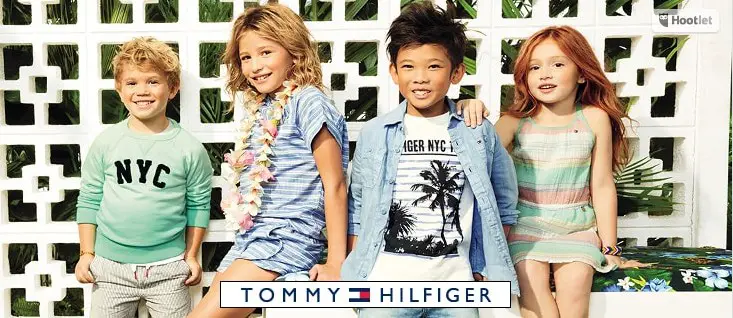
Differs greatly in boys and girls sizes. Often this brand is small for boys and normal for girls. In pictures girls sometimes wear boys' clothes and that is big.
Tommy Hilfiger size chart
Tommy Baby
- size 44; 00 month; leg length 15
- size 50; 0 month; leg length 15
- size 56; 1-2 months; leg length 17
- size 62; 2-4 months; leg length 19,25
- size 68; 5-6 months; leg length 21,75
- size 74; 7-9 months; leg length 24,25
- size 80; 9-12 months; leg length 27
- size 86; 12-18 months; leg length 31,25
- size 92; 1,5-2 years; leg length 34,5
boys
- size 98; 3 years; leg length 41
- size 104; 4 years; leg length 45,5
- size 110; 5 years; leg length 49.25
- size 116; 6 years; leg length 52
- size 122; 7 years; leg length 56
- size 128; 8 years; leg length 59.25
- size 134; is not there
- size 140; 10 years; leg length 65
- size 146; is not there
- size 152; 12 years; leg length 70,5
- size 158; is not there
- size 164; is not there
- size 170; is not there
- size 176; 16 years; leg length 82
girls
- size 98; 3 years; leg length 41
- size 104; 4 years; leg length 45,5
- size 110; 5 years; leg length 49,25
- size 116; 6 years; leg length 52
- size 122; 7 years; leg length 56
- size 128; 8 years; leg length 59,75
- size 134; is not there
- size 140; 10 years; leg length 65,75
- size 146; is not there
- size 152; 12 years; leg length 71,5
- size 158; is not there
- size 164; 14 years; leg length 77,5
- size 170; is not there
- size 176; 16 years; leg length 78,5
How does Tom Tailor children's clothing fall?
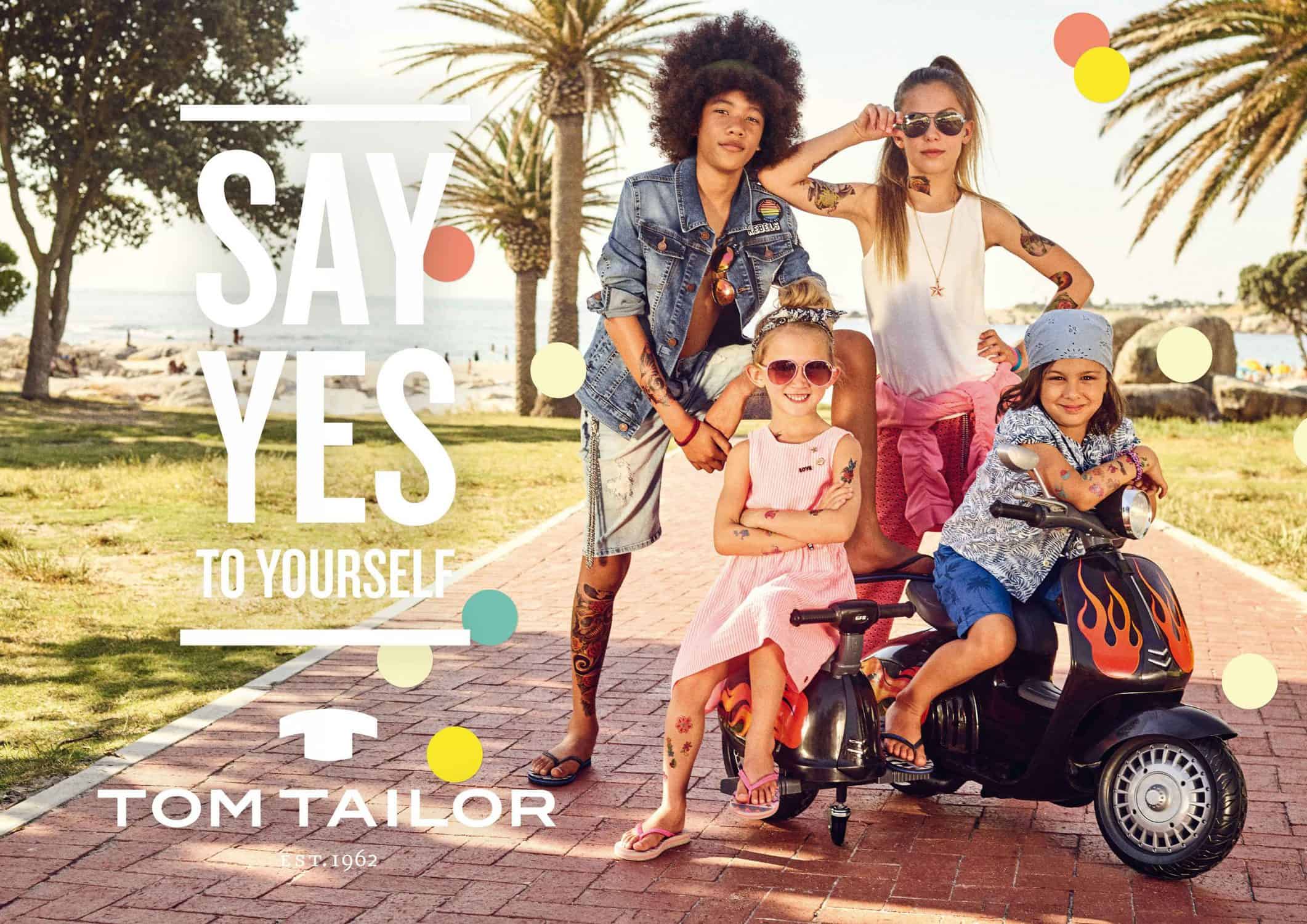
While girls like refined details like flounces, prints and lots of sequins and the favorite jeans are usually a skinny fit, boys like cool statement prints and a shabby style for jeans and sweaters.
Their baby fashion is beautiful, but above all practical.
This brand is normal. So you can just keep the same size as you normally wear.
How does Tumble 'N Dry fall?
The fun clothes from Tumble 'N Dry are comfortable and have a great fit.
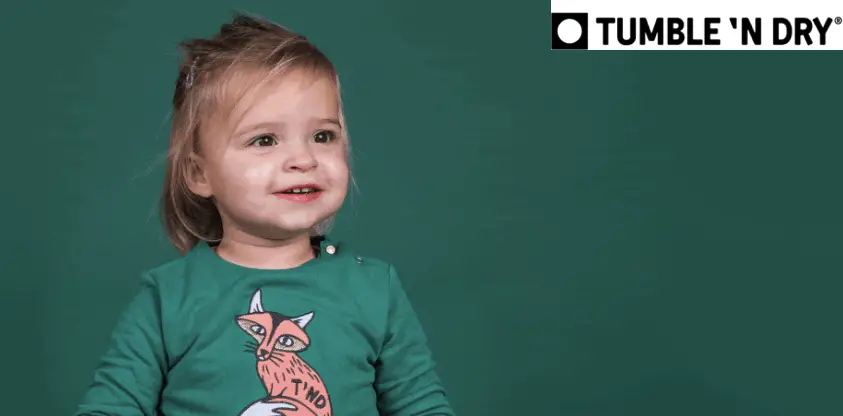
The Tumble 'N Dry collections are for boys and girls, but in every collection there are garments that are unisex.
The brand is sometimes a bit narrow and sometimes normal.
The sizes used by Tumble 'N Dry are: ZERO, LO, MID and HI. The ZERO collection goes from size 50 to 74 and is intended for babies.
The collection then switches to the LO collection for toddlers and toddlers, from size 68 to 98.
The MID runs from size 92 to 140 for toddlers and for older children they have a HI collection which runs from size 128 to 176.
Tumble 'N Dry size chart
ZERO
- size 50; 0-1 month; leg length 17
- size 56; 1-2 months; leg length 19
- size 62; 2-4 months; leg length 121,5
- size 68; 4-6 months; leg length 24,5
- size 74; 6-9 months; leg length 27,5
LO
- size 68; 4-6 months; leg length 24,5
- size 74; 6-9 months; leg length 27,5
- size 80; 9-15 months; leg length 30,5
- size 86; 12-18 months; leg length 34
- size 92; 1,5-2 years; leg length 38,5
- size 98; 2-3 years; leg length 42
MID
- size 92; 1,5-2 years; leg length 38,5
- size 98; 2-3 years; leg length 42
- size 104; 3-4 years; leg length 46
- size 110; 4-5 years; leg length 49.5
- size 116; 5-6 years; leg length 53
- size 122; 6-7 years; leg length 56,5
- size 128; 7-8 years; leg length 60,5
- size 134; 8-9 years; leg length 64
- size 140; 9-10 years; leg length 67,5
HI
- size 128; 7-8 years; leg length 60,5
- size 134; 8-9 years; leg length 64
- size 140; 9-10 years; leg length 67,5
- size 146; 10-11 years; leg length 70,5
- size 152; 11-12 years; leg length 73,5
- size 158; 12-13 years; leg length 76,5
- size 164; 13-14 years; leg length 80
- size 170; 14-15 years; leg length 83
- size 176; 15-16 years; leg length 86
Check out the latest collection here
How does Vingino fall?
Vingino is a children's clothing brand that makes trendy and hip clothing for babies and kids from 0 to 16 years old.
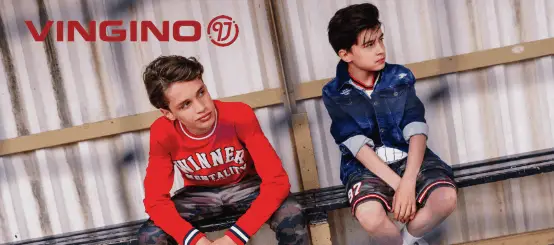
The collections of this brand distinguish 3 lines: the mini, the kids and the toe line. The sizes of this brand run from size 50 to size 188.
Normally, the garments have a normal fit, but jeans from this brand can be narrow and long. The outerwear can also be a bit narrow.
Are your kids slim and tall? Then this brand is ideal for them.
Vingino size chart
Kids & Teens
- size 92/2; 1,5 years
- size 98/3; 3 years
- size 104/4; 4 years
- size 110/5; 5 years
- size 116/6; 6 years
- size 122/7; 7 years
- size 128/8; 8 years
- size 134/9; 9 years
- size 140/10; 10 years
- size 146/11; 11 years
- size 152/12; 12 years
- size 158/13; 13 years
- size 164/14; 14 years
- size 170/15; 15 years
- size 176/16; 16 years
- size 182/17; 17 years
- size 188/18; 18 years
View the new collection and sale here
How do We fall children's clothes?
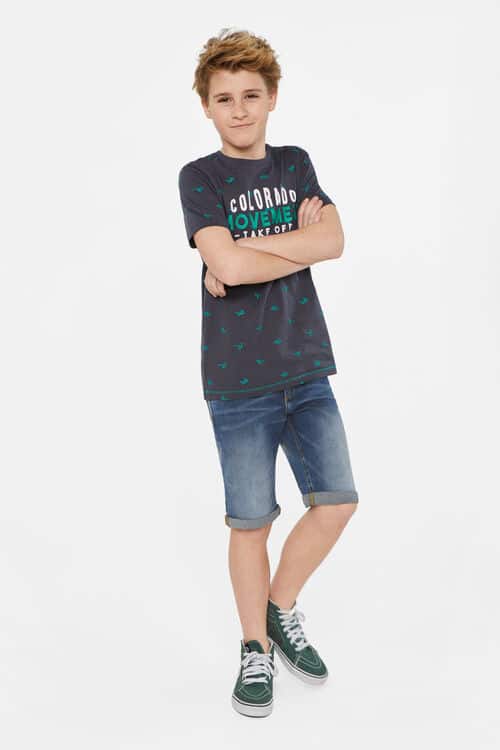
We normally fall for the tighter clothes, up to big.
WE children's clothing size chart
Girls & Boys
- size 92; 2 years
- size 98; 2-3 years
- size 104; 3-4 years
- size 110; 4-5 years
- size 116; 5-6 years
- size 122; 6-7 years
- size 128; 7-8 years
- size 134; 8-9 years
- size 140; 9-10 years
- size 152; 11-12 years
- size 158; 12-13 years
- size 164; 13-14 years
- size 170; 14-15 years
View the WE collection here at Wehkamp
How does Zara children's clothing fall?

Always fun and trendy items at this Spanish chain.
Zara is very diverse in sizes. The Zara sizes for kids go from '03' to '08'.
Zara children's clothing size chart
- 03; 2-3 years; leg length 40
- 04; 3-4 years; leg length 44
- 05; 4-5 years; leg length 48
- 06; 5-6 years; leg length 52
- 07; 6-7 years; leg length 56
- 08; 7-8 years; leg length 60
How does Z8 fall?
Z8 is the beautiful clothing brand for baby and children's clothing that comes out every year with two extensive collections.
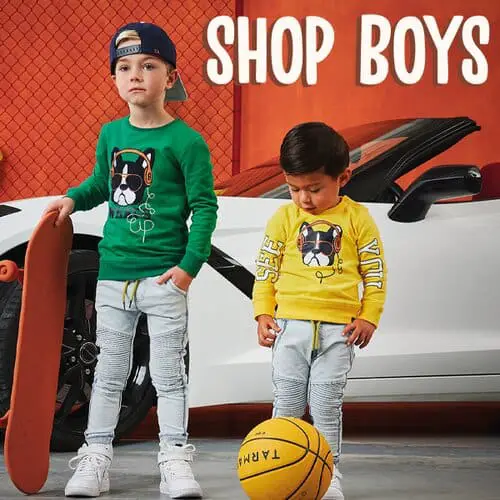
You can go there for clothing in sizes 50 to 128. Z8 also has a newborn line in sizes 50, 56 and 62. The clothing usually has a good fit and is nice and soft and comfortable.
For the baby clothes of Z8, the sizes are often slightly smaller, while the outerwear of the children's collection is slightly larger.
In short, the sizes vary and can differ per item or per collection.
Z8 size chart
Baby
- size 50; 0-1 month
- size 56; 0-2 months
- size 62; 3-4 months
- size 68; 5-7 months
- size 74; 8-10 months
- size 80; 11-15 months
- size 92; 16-24 months
Children upstairs
- size 92/98; 2-2,5 years
- size 104/110; 3-4 years
- size 116/122; 5-6 years
- size 128/134; 7-8 years
- size 134/140; 9-10 years
Children under
- size 92; 2 years
- size 98; 2,5 years
- size 104; 3 years
- size 110; 4 years
- size 116; 5 years
- size 122; 6 years
- size 128; 6-7 years
- size 134; 7-8 years
- size 140; 9 years
- size 146; 10 years
Determine the correct size for your child
If you want to determine the size of your son or daughter, it is best to measure the sizes of, for example, a pair of pants or sweater that fits him or her well at the moment.
Buying children's clothing, especially if you have several kids, can be a crime, as the Bellinga's show:
How do you measure the size of your child?
Or even better, you can measure the height of your child yourself. How do you do that?
- Have your child stand upright with their back to the wall.
- At the top of the head, place a mark with a piece of chalk.
- Then have the child step to the side and measure the height from the ground to the mark.
Do you want to determine the trouser size? Then measure the hip size; you measure this at the widest part of the hips. This includes the buttocks. How do you do that?
- Let your child stand upright in only his underwear.
- Grab a tape measure and wrap it around his waist.
- Slide the measuring tape to the fullest part of the hips up to the buttocks.
- Read the size and add about 2,5 to 5 cm for a slightly looser fit
- If you come to half numbers, round up.
Include children's clothing sizes
When taking the measure, this happens directly on the body. That way you always have the right size.
- Chest width: is measured at chest height around the body.
- Waist width: is measured at the height of the navel around the body where the waist is narrowest.
- Hip width: is measured at the hip around the body where the hip is widest.
For long pants, measure from the inside leg length vertically down to the ankle. From the outside, start at the hip vertically down to the ankle.
Keep in mind that every child is different and can therefore always deviate slightly from the established sizes.
Clothing sizes differ in measured values with other countries
The Dutch clothing sizes differ from the American clothing sizes.
In the Netherlands the sizes are based on the height of the child (in cm), but in America the sizes are based on the age of the child.
American clothing sizes
With American clothing sizes, especially for babies, the size is indicated in months.
You will then see on the label: a number with an M (short for 'Months') behind it.
An exception to this are sizes P ('Preemie'), for premature babies and NB ('Newborn'), for newborn babies.
The US baby clothing sizes (for babies 0-24 months) are as follows:
| US size | Age (months) | Length baby (cm) | Similar European size |
| P | Premature | all 43 | 44 |
| NB | 0 | all 55 | 50 in 56 toy |
| 3M | 0-3 | 55-61 | 62 |
| 6M | 4-6 | 61-67 | 68 |
| 9M | 7-9 | 67-72 | 74 |
| 12M | 10-12 | 72-78 | 80 |
| 18M | 13-18 | 78-83 | 80 in 86 toy |
| 24M | 19-24 | 83-86 | 86 |
The US Toddler sizes are as follows:
| US size | Age (years) | Length child (cm) | Similar European size |
| 2T | 2 | 88-93 | 92 |
| 3T | 3 | 93-98 | 98 |
| 4T | 4 | 98-105 | 104 |
| 5T | 5 | 105-110 | 110 |
Size chart of the children's clothing brand
Usually, most online web shops have a size table in which you can easily read the size based on the height or age of the child.
| European size | Abbreviation |
| 128 | XS |
| 140 | S |
| 152 | M |
| 164 | L |
| 176 | XL |
| 188 | XXL |
In America, completely different sizes are used for children's clothing, just as with clothing for adults.
Where we base children's clothing sizes on the height of the child, in America it is based on age.
Baby clothing is based on the number of months (indicated with an M for months), then toddler clothing (indicated with a T, from the English word Toddler), and children's clothing is also based on the number of years.
Sometimes the abbreviation CM is behind the number, this of course stands for centimeter. European sizes always differ by 6 centimeters, and Chinese sizes always differ by 7 centimeters.
The numbers are therefore not quite the same. It does mean that your child can do a little longer with the size.
Often a double size is shown for outerwear, for example 66/44. 66 indicates the length measurement, and 44 the width.
If your child is a bit chubby, you can choose a slightly wider size. This is different for every brand and size, so there is not always a choice here.
A different system was chosen in Australia than ours. Especially the sizes of baby clothes are special, because they are indicated with zeros.
The largest size of baby clothes is indicated with 0, which is comparable to our size 74.
The more zeros and numbers, the smaller the size. This goes up to clothing for premature babies, the smallest size is 0000000, which is comparable to our size 40.
So you cannot immediately see what the right size is for your baby, you will have to count zeros. Although it is useful to remember that more zeros represent a smaller size.
Children's clothing
Australian sizes of children's clothing are also confusing. These are shown with the maximum age at which the garment can be worn.
For example size 10, can be worn until your child is 10 years old.
This can be quite confusing, so some clothing brands use a double size, for example 8/10, which indicates that the size is for children aged 8-10.
This is again very confusing, because sizes are not shown in height but in age, and children can have very different heights.
Also pay attention to physique
Regardless of the height and age of the child, the physique is also important to consider.
If the child is slightly heavier, it is useful to choose clothes of a larger size and material that yields.
Buy children's clothes on the growth
It is not surprising that children's clothing is not bought exactly to size due to the inevitable fact that children grow to their 18 years.
It is good to know that children basically grow a few centimeters every six months.
On the basis of this you will therefore notice that a sweater or pants that you may have bought only three months ago suddenly no longer fit.
This does not have to be due to the brand or the material of the product, but can simply mean that the child has just gone through a growth spurt.
If you notice this, it is good to hold on to this moment and take this into account when purchasing clothes next.
Children's clothing size chart
Children grow up quickly and clothing must be replaced regularly.
Of course you keep in mind that when purchasing new clothes, the different sizes are taken into account.
It is important that the clothing is always comfortable and comfortable. The children must of course be able to move freely and happily. The correct size plays a major role in this.
From baby to teenage years you will therefore have to take the right size into account.
Until about age 5, the sizes for boys and girls will not differ that much.
Since the physique between boys and girls will change, the sizes for boys and girls will also differ.
The difference will mainly be in hip development, especially in girls.
For some clothes you can often buy a size bigger. For example with long pants.
So it can last a little longer as long as the hip fits well, but the legs are a bit long, which you can easily take in and detach again as the child grows a little longer.
Children's clothing sizes girls
| Children's clothing size | Age (years) | Chest (cm) | Size (cm) | Hip (cm) |
| 92 | 1,5 – 2 | 51 – 52 | 47 – 48 | 49 – 51 |
| 98 | 2 – 3 | 52 – 54 | 48 – 49 | 51 – 54 |
| 104 | 3 – 4 | 54 – 55 | 49 – 51 | 54 – 56 |
| 110 | 4 – 5 | 55 – 57 | 51 – 52 | 56 – 58 |
| 116 | 5 – 6 | 57 – 58 | 52 – 53 | 58 – 61 |
| 122 | 6 – 7 | 58 – 60 | 53 – 55 | 61 – 63 |
| 128 | 7 – 8 | 60 – 62 | 55 – 56 | 63 – 65 |
| 134 | 8 – 9 | 62 – 64 | 56 – 58 | 65 – 68 |
| 140 | 9 – 10 | 64 – 67 | 58 – 59 | 68 – 72 |
| 146 | 10 – 11 | 67 – 73 | 59 – 61 | 72 – 75 |
| 152 | 11 – 12 | 73 – 77 | 61 – 64 | 75 – 79 |
| 158 | 12 – 13 | 77 – 82 | 64 – 66 | 79 – 83 |
| 164 | 13 – 14 | 82 – 88 | 66 – 68 | 83 – 87 |
| 170 | 14 – 15 | 88 – 93 | 68 – 70 | 87 – 91 |
| 176 | 15 – 16 | 93 – 98 | 70 – 72 | 91 – 95 |
| 182 | 16 – 17 | 98 – 103 | 72 – 74 | 95 – 99 |
Children's clothing sizes boys
| Children's clothing size | Age (years) | Chest (cm) | Size (cm) | Hip (cm) |
| 92 | 1,5 – 2 | 51 – 52 | 47 – 48 | 49 – 51 |
| 98 | 2 – 3 | 52 – 54 | 48 – 49 | 51 – 54 |
| 104 | 3 – 4 | 54 – 55 | 50 – 51 | 54 – 56 |
| 110 | 4 – 5 | 55 – 57 | 51 – 53 | 56 – 58 |
| 116 | 5 – 6 | 57 – 59 | 53 – 54 | 58 – 60 |
| 122 | 6 – 7 | 59 – 60 | 54 – 55 | 60 – 62 |
| 128 | 7 – 8 | 60 – 62 | 55 – 56 | 62 – 65 |
| 134 | 8 – 9 | 62 – 64 | 56 – 58 | 65 – 67 |
| 140 | 9 – 10 | 64 – 66 | 58 – 60 | 67 – 71 |
| 146 | 10 – 11 | 66 – 70 | 60 – 62 | 71 – 73 |
| 152 | 11 – 12 | 70 – 73 | 62 – 65 | 73 – 76 |
| 158 | 12 – 13 | 73 – 76 | 65 – 67 | 76 – 79 |
| 164 | 13 – 14 | 76 – 79 | 67 – 69 | 79 – 83 |
| 170 | 14 – 15 | 79 – 82 | 69 – 71 | 83 – 86 |
| 176 | 15 - 16 | 82 – 85 | 71 – 73 | 86 – 89 |
| 182 | 16 – 17 | 85 – 88 | 73 – 75 | 89 – 92 |
Combine sizes so they can play well
It is also useful to know that children have a narrower lower body than the upper body. Children have narrower hips and thighs.
For this reason, many parents choose a top that is the right size for the child, based on the age or body size, but the trousers are taken a size smaller. Playing with pants that are too wide or too long is very restrictive.
You can easily determine the pants size on the basis of the hip size instead of on the basis of age or height.
If you bought by age and the pants are too big, most children's pants have handy adjustment systems on the inside with elastic and buttons.
This is a very practical invention, which parents like us always like, so that nothing slips down during play well with your child.
If it doesn't look like it, all you have to do is return the pants and buy a smaller size.
Or you can keep the pants and wait until the pants will fit the child.
Do shoes have the same sizes everywhere?
No. Shoes also have different size charts in each country.
Although the fit of shoes is always different, and it is therefore better to try on shoes in a store before purchase, you can also order shoes online or get them if you do not have your child with you.
Foot length is measured from the heel to the end of the big toe. It is best to measure the foot with a ruler.
Place it on the floor next to your child's foot while your child is standing still.
Each size increases by 0,6 or 0,7 centimeters.
Buy children's clothes
You have noticed that the sizes can differ per brand and that they do not always fit well.
A general rule to use when in doubt about the right size: buy a size up!
You can always return the purchased item. However, if you do not want the hassle of returning, this list is handy to have.
Now that you have read these advice, buying children's clothes will become a lot easier for your little one.
You no longer have to worry that you have accidentally bought too big or too small pants or sweater.
In short, no more hassle with bad bargains, wasted time and shipping and return costs for something that does not fit properly.
Buying clothes (online) becomes a lot easier, more budget-friendly and even more fun thanks to this useful information.
Happy shopping!
Also read: You can pay for the best children's clothing afterwards with Afterpay at these stores

Always something to do for the holidays or rainy day?
Play Choice now has the ultimate activity book collection, with over 60 pages of fun coloring pages and educational puzzles.
Joost Nusselder, the founder of Speelkeuze.nl is a content marketer, father and loves trying out new toys. As a child he came into contact with everything related to games when his mother started the Tinnen Soldaat in Ede. Now he and his team create helpful blog articles to help loyal readers with fun play ideas.